
Home » Travel Guides » Serbia » 15 Best Things to Do in Niš (Serbia)

15 Best Things to Do in Niš (Serbia)
Since the days of the Roman Empire the city of Niš has been at an unofficial boundary between East and West. One man who bestrode that divide was the Roman Emperor Constantine, who was born right here in ancient Naissus and went on to found a “New Rome” at Constantinople. The Ottomans had control of Niš from the middle ages to the 19th century, and left an imperious fortress that still has a 16th century mosque inside.
There are also a few eye-opening memorials to violent episodes in the city’s past, like a tower of skulls built by the Ottomans to warn against uprisings, and a Second World War concentration camp, left undisturbed as a memorial. On the lighter side there’s sumptuous nature outside Niš at river gorges, the Suva Planina mountain and the city’s hot springs.
Let’s explore the best things to do in Niš :
1. Niš Fortress

Right on the Nišava River is the daunting Ottoman fort that was completed in 1723. This encloses an ancient citadel and has been settled since a Roman camp was founded here more than 2,000 years ago.
The new fortress was a massive undertaking: It covers 22 hectares and comprises more than two kilometres of walls.
You’ll arrive via the ceremonious Stambol gate, and there are lots of intriguing old details among the parkland inside.
One is the Turkish hamam, near the gate from 1498. There’s also mosque, Bali-Behy, dating to 1521, a lapidarium with Roman tombstones, a powder magazine and a monument to the liberation of Niš from 1902.
2. Skull Tower

A grisly reminder of the bloodshed of the First Serbian Uprising is a tower literally made of rows of human skulls in quicklime.
The story goes that during the Battle of Čegar, the Serbian trenches were being overrun by attacking Ottomans.
So the commander Stevan Sinđelić personally detonated the powder magazine, obliterating his position on Čegar Hill to avoid being taken prisoner by Vizier Hurshid Pasha.
Some 952 Serbian skulls were collected from the battlefield and became the material for this tower in 1809 to deter another uprising.
After the Ottoman withdrawal in 1878, most of these were removed and buried.
But a 4.5-metre remnant of the tower is housed in a chapel and contains 54 skulls.

Niš, or Naissus, was taken by the Romans in 75 BC and became a camp on the Via Militaris, a road across southeastern Europe from what is now Belgrade to Constantinople.
As it happens, Emperor Constantine was born in Naissus in 272 AD, and you can visit his birthplace at the Mediana archaeological site.
Southeast of the city, this villa the most complete Roman vestige in Niš.
You can make out the remnants of a grand peristyle (open fountain surrounded by a colonnade). Beside the peristyle under a canopy are the ruins of marble columns, mosaics and traces of frescoes, as well as the heating system for the villa’s baths.
4. Archaeological Hall

Like Skull Tower and Mediana, the Archaeological Hall belongs to the National Museum of Niš.
Many of the artefacts unearthed in this ancient city are on show here.
These go back long before the Romans arrived, to when Niš was a Bronze Age settlement in the 6th century BC. From this time there are Celtic swords, ceramics, items of jewellery, bronze hairpins and male and female figurines.
And from the Roman days you can see sculptures discovered at Mediana, representing Dioysus and Satyr, the Greek God Asclepius and his daughter Hygia and finally Jupiter on his throne.
There’s also a life-sized statue of Emperor Constantine, which is one of three imperial portrait sculptures on show.
5. Tinkers’ Alley

On Kopitareva Street, opposite the glass facade of the Kalča shopping mall you can dive into the city’s last surviving craftsman’s quarter.
This street is from the time of Ottoman rule and was plotted in the first half of the 18th century.
The main livelihood was tinsmithing, and it’s a trade that continued here right up to the 1990s.
Since then the quaint cobblestone alley has opened up to tourists and tinkers have been replaced by the cafes and restaurants that now occupy these 18th and 19th century buildings.
6. Crveni Krst Concentration Camp

After the Second World War ended this concentration camp was preserved as a poignant memorial to the Jewish, Serbian and Romani people imprisoned here.
The Crveni Krst (Red Cross) camp has been left alone since the war and feels eerily like it has only just been abandoned.
You’ll be given an introduction to the camp at the entrance and there are information panels dotted around the site to fill you in.
After the first mass executions began in 1942 there was a breakout in which 15 prisoners managed to escape, an act met with a brutal response by the Nazis.
7. Bubanj Memorial Site

During the Second World War those mass executions took place on Mount Bubanj just to the west of the city.
It is estimated that 10,000 prisoners from the Crveni Krst camp were killed on this hilltop.
Right after the war the hill was turned into a memorial park.
And before long a sculpture was erected in the clearing at the crest.
It was the work of Yugolsav artist Ivan Sabolić and depicts three clenched fists to symbolise the defiance of the children, women and men who died here.
8. Latin Church in Gornji Matejevac

With a scenic location on Metoh Hill above the village of Gornji Matejevac is a Byzantine church that built in the 1000s.
It’s one of only a few monuments in the region to predate the Nemanjić Dynasty, which ruled Serbia and much of southeastern Europe in the middle ages.
The church has a condensed cross floor plan, and bears the classic Byzantine method of white stone alternating with red brick.
Although none of the medieval decoration remains, the church’s brick dome is marvellous from the inside.
The name “Latin Church” actually refers to merchants from Dubrovnik, known as “Latins”, who worshipped at the church in the 17th century.
9. Officers House

Facing the fortress ramparts across the Nišava is a stately building from 1890 with an interesting past.
This first opened as a restaurant but was soon purchased by the army as an officers mess, and during the First World War it became the temporary seat of the Serbian parliament.
Numerous resolutions were passed here that would have a lasting impact on Serbia and the region.
The one that would truly transform this part of the world was the Niš Declaration in 1915, more or less the birth of Yugoslavia as an idea.
It stated Serbia’s aim to unite the Serbs, Croats and Slovenes under one nation, a move that still has repercussions today.
10. Holy Trinity Cathedral

The city’s cathedral is a product of the Treaty of Paris in 1856, in which the Ottomans pledged to recognise the rights of Christians in their empire.
Construction took place over the next few decades and the church was consecrated after the liberation of Niš in 1878. The design is an engaging mishmash of Serbian-Byzantine, Neo-Renaissance and Baroque styles.
At the altar the illustrious 19th-century Realist painter Đorđe Krstić was hired to compose the 48 icons in the iconostasis.
Sadly the originals were lost in a fire in 2001, but the building and its decoration have been completely restored.
11. King Milan Square

Also just across the water from the fortress, this square came about in the 1720s during its construction.
Shops and khans (merchant inns) were set up here as the city grew along the riverbank.
A little later there was a market on this square, where the local landowners would sell the leftover goods they had accumulated from their tenants as tax.
When Niš was liberated the old Turkish-style townscape was swept aside and this square was given a fresh Central European air.
Despite the 20th-century tower blocks on the west side there’s still a pleasing row of 19th-century houses on the square’s eastern edge, with cafe terraces in front.
12. Niška Banja

A few kilometres to the southeast is the city’s spa, which has traces of Neolithic civilisation going back 3,300 years.
Naturally the Romans were fond of Niška Banja and built an ancient resort around its five springs.
The Roman bath and its two pools, clad with mosaics hark back to this time.
Thousands of years later, people still visit to bathe in the water and soak in the mineral-rich mud.
The water comes out at between 36-38°C, and is actually mildly and harmlessly radioactive due to the natural presence of radon! It is claimed to be most beneficial for coronary issues, cellulite and to rehabilitate orthopaedic injuries.
To the south is the stirring sight of the Suva Planina mountain, cresting at more than 1,800 metres and with fragments of the Via Militaris Roman road on its slopes.
13. Jelašnica Gorge

Carry on east and you’ll find yourself at a bewitching nature reserve.
You can pass through the two-kilometre Jelašnica Gorge by car on a winding road to get a good look at the walls of dolomite that culminate with jagged, teeth-like rocks.
There are few places to park up, and set up camp or just stop for picnic.
All have views of the gorge’s ghostly rock formations and abundant foliage.
There are also caves in the cliffs, the ruins of a Roman fort are still visible in beside the gorge, as well as the Ripalijka waterfall, which is enchanting.
The Sicevo Gorge on the Nišava River is also in reach, and has walking trails and two hydroelectricity plants from the early 1900s.
14. The Nišville Jazz Festival

For four days in the middle of August the city’s fortress puts on the biggest jazz festival in the Balkans.
Nišville began in 1995 and was the first music festival in Serbia to be recognised by the Ministry of Culture as a national cultural event.
The festival books leading jazz, blues and soul artists, but also has a broad church, inviting fusion bands that blend jazz with Balkan folk.
In 2017 Patti Austin, Al Foster and Candy Dulfer were in the lineup, while previous editions have welcomed Ginger Baker, Solomon Burke and Osibisa to the stage.
15. Traditional Food

Now, a meal at a kafana (typical Balkan tavern) is something you have to try at least once in Niš.
Kafanas are much more than just somewhere to eat, as meals come with live entertainment and a host of time-honoured customs.
One of these is toasts with rakija, a powerful fruit brandy and Serbia’s national drink.
Eating at a Kafana is a multi-course event, beginning with a meze and ending with coffee.
Out and about there are a few delicacies that Niš does better than anywhere else: Burek is a phyllo dough pastry filled with meat or cheese, while pljeskavica, is a grilled patty from seasoned beef, lamb and pork in a pita or a bun with a spicy cheese filling (urnebes).
15 Best Things to Do in Niš (Serbia):
- Niš Fortress
- Skull Tower
- Archaeological Hall
- Tinkers' Alley
- Crveni Krst Concentration Camp
- Bubanj Memorial Site
- Latin Church in Gornji Matejevac
- Officers House
- Holy Trinity Cathedral
- King Milan Square
- Niška Banja
- Jelašnica Gorge
- The Nišville Jazz Festival
- Traditional Food

(018) 511-002; (060) 7511-005; (060) 6511-004; (060) 7511-009 avio šalter
TPC „Kalča“ lokal D73
Pon-pet: 09h-20h; Sub: 09h-15h
Srednji kurs NBS na dan: link
Istanbul 3 noćenja
Turska jesen.
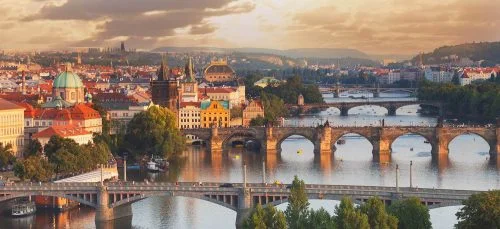
NOVA GODINA
No tours match your criteria
Važne informacije

10 Best things to do in Niš in one day
Welcome to Niš, a city known for its dark history, archaeological sites, superb jazz festival, and delicious food. One of the oldest cities in Europe, it is definitely a place I love coming back to. Both history lovers and culture vultures will immediately fall in love with Niš.
The third-largest city in Serbia, Niš is the birthplace of the Roman Emperor Constantine the Great . So, it comes as no surprise that Niš has great historical wealth. You will find archaeological sites, museums, historical buildings, and churches connected with the Roman and Byzantine periods scattered across the city.
With a stone tower embedded with human skulls and a WW2 concentration camp memorial, the city of Niš is also known for its violent past. These morbid attractions serve as reminders of the region’s dark past. But these are not the only attractions in town you can visit.
In this guide, I’ve put together a list of what I feel are the best and most important places to visit in Niš. I’ve organized it in a way that you can visit all the places in this list during a one-day itinerary in Niš.

1. Admire the beauty of Tinkers Alley
If you have one day in Niš, I recommend starting your travel adventure with a visit to the city’s last surviving craftsman’s quarter .
A quaint little alley packed with coppersmiths and other metal workers, Tinkers Alley dates back to the first half of the 18th century. It played an important role in the city’s economy and culture. For example, tinsmithing was the most popular trade on this quaint cobblestone alley.
Nowadays, Tinkers Alley is one of the most popular places to visit in Niš. The original tinkers have been replaced by tourists who come here to eat and drink in bars and restaurants which are situated inside beautiful 18th and 19th century buildings. It will take you about an hour to enjoy Tinkers Alley.

2. Explore the Niš Fortress
Built during the 18th century by Ottoman Turks, Niš Fortress is the center of tourist life in the city. Here, both locals and tourists gather and explore a veritable maze of sights. This monumental stone structure is actually one of the best-preserved fortresses in the region.
An interesting fact about the Niš Fortress is that Bulgarians used it as a prison during World War I.
You can see it from the outside or also visit it inside. If you choose the latter, you will need approximately 2 hours to tour this fortress.
Built around a Roman citadel, the fortress is packed with historical remnants from the old times. Visitors will have an opportunity to see everything from a powder room and a Turkish steam bath to well-preserved walls and gates. The fortress is also a giant green park where locals like to relax in summer when the weather is nice.

3. See the Skull Tower
The Skull Tower (Ćele Kula) is one of the most morbid structures that you will find in this part of Europe. It is exactly what the name indicates- a 4-meter-high stone tower embedded with human skulls. The tower was built in 1809 right after the battle between Serbian revolutionaries and Ottoman soldiers.
You will find this morbid attraction just a short drive from the city center. Surrounded by a small park, the tower is situated inside a building that resembles a chapel. The structure was built using the skulls of 952 fallen Serbian rebels, but less than 60 of the heads remain today. The rest of the skulls are either buried somewhere or lost.
The Skull Tower (Ćele Kula) is, without a doubt, one of the most unusual things to see in Niš.

4. Learn about history at the National Museum of Niš
If you wish to learn more about the history of the city, pay a visit to the National Museum of Niš. Situated inside a charming building, the museum is on the smaller side and consists of just one room. Although you could walk through the entire museum in less than a minute, the museum is really interesting and you can easily spend an hour here.
Most of the things you will see are actually archeological exhibits. Some of these exhibits date back to the Bronze Age. The most interesting exhibits are related to a luxurious villa built by Constantine the Great called “Mediana”. My favorite exhibit at the National Museum Niš is the model of this posh villa.
Visiting the National Museum is one of the best things to do in Niš when it’s raining outside.
5. Visit the Bubanj Memorial Site
Venture outside the city gates to find the Bubanj Memorial Site. Also known as the Monument to fallen Yugoslav World War II fighters , the memorial site is another interesting place to visit in the city of Niš.
Mount Bubanj is the place where 10,000 prisoners from the Crveni Krst camp were taken and killed. Right after the war, the hilltop was turned into a memorial park to honor the victims.
The monument has the shape of three clenched fists . If you look closely, you will notice that each fist has a different shape and size. This is because the three clenched fists symbolize the defiance of the children, women, and men who died here. The sculpture is the work of Yugoslavian artist, Ivan Sabolić.

6. Go on a tour of the Red Cross Camp
Although Serbia is definitely not the first place that comes to mind when talking about WWII concentration camps , Niš is home to one of the Nazi horror factories.
Red Cross Camp (Crveni Krst) was named after a Red Cross station which was located nearby. The camp was initially intended to be just a transit camp, but in the end, out of 30,000 people who passed through it during the war, 12,000 were tortured and killed.
Today, you will find a memorial museum that stands right on the site of the concentration camp. The ticket booth actually served as a guard tower in the past. You will also notice a SS symbol and a Nazi swastika on the sign right above the windows.
The Red Cross Camp may be a hard place to see live, but it is an important place to visit in Niš, especially for people who are interested in historical sites.
7. Discover the ruins of Mediana
Located just outside the city gates, the Ruins of Mediana is an important archeological site in Serbia.
Dating back to the late Roman period when Constantine the Great was the ruler of the empire, the site offers some well-preserved archeological remains of the Villa of Emperor Constantine the Great. For those who don’t know, Niš, or Naissus, is one of the oldest cities in Europe . The Romans took it in 75 BC and the city became a camp on the ancient Roman road, the Via Militaris.
The ruins of Mediana have been closed for years, but the site started welcoming visitors again in 2023. Although some sections are still in progress and you can only pay for entrance with cash, this archaeological site is a place definitely worth visiting while you are in Niš.
You can expect to see remnants of a grand peristyle, as well as ruins of marble columns, a heating system for the baths in the villa, and traces of frescoes.

8. See the beautiful Holy Trinity Cathedral
No one-day itinerary to Niš is complete without stopping by the beautiful Holy Trinity Cathedral. This cathedral was built in 1878, as a by-product of the treaty in Paris in 1856 when the Ottomans needed to recognize Christianity in their empire.
With a mix of Serbian-Byzantine, Neo-Renaissance, and Baroque-style designs, it is one of the most amazing historical buildings in Niš . I like the icons which were made by the illustrious 19th-century Realist painter, Đorđe Krstić. It will take you around 30 minutes to explore the church.
9. Try authentic Serbian foods
Foodies visiting Niš are in for a treat. Southern Serbia is famous for its cuisine and the city of Niš is one of the best destinations to enjoy authentic Serbian dishes .
For breakfast, you’ll be able to choose between Anton and Rajko, two of the most famous bakeries in the city where burek is the most popular dish to order. For those who don’t know, burek is a special dough pastry filled with meat or cheese beloved all across the Balkan Peninsula.
For lunch and dinner, I recommend reserving a table at a kafana (typical old-school Serbian tavern) to try local food delicacies and drink a powerful fruit brandy called rakija. Below you will find a short list of my favorite old-school kafanas in Niš where you can have a memorable dining experience.
- Nišlijska Mehana
- Kafana Mrak
- Stambolijski
- Kafana Brka
- Kafana Galija
- Etno Kafana Biser
10. Niška Banja
Located just a short drive from the city, Niška Banja is the city’s spa center with natural springs . The Romans discovered five springs in this location and decided to build an ancient resort around them with a giant Roman bath and two pools.
Today, Niška Banja is a popular spa resort among the elderly who come here for medicinal purposes. These hot springs are known to have a natural presence of radon which is known to rehabilitate orthopedic injuries and coronary issues.
If you are looking for a relaxing time, a visit to Niška Banja is a must-do during your one-day visit to Niš.

Where to stay in Niš
You can visit Niš in one day following this itinerary, but if you will have more time, you can also sleep in the city. If you decide on this option, here are my recommendations for places to stay in Niš:
- Ambasador Hotel : the only 5-star hotel in Niš, the Ambasador is the best place to stay if you are looking for luxury and comfort at a great price! In the off-season, you can find rooms for 200 euros, which is an excellent value for the service and facilities you get.
- Garni Hotel Consul : If you are looking for a more budget-friendly option, Hotel Consul is a great option place to stay as you can still benefit from a great location and service at a more affordable price.
FAQ: Popular questions about the best things to do in Niš
What is niš in serbia known for.
The city is best known for being the birthplace of Constantine the Great . It is a great historical city with a lot of things to see and do.
Personally, I would also add that Niš is home to some of the best restaurants in Serbia.
Is Niš worth visiting while in Serbia?
Being one of the oldest cities in Europe, Niš is definitely worth visiting for its historical attractions.
What is the old name of Niš?
The Romans used to call the city Naissus.
Is one day enough to visit Niš?
I think that you can visit the most popular tourist attractions in Niš in one day. But to make the most of your time there, I recommend driving your car to Niš simply because some of the attractions are located outside the city center.
If you need to rent a car for your trip, check the deals at Discover Cars . You can also read our guide about driving in Serbia as a tourist .
Niš is not always the first place that comes to mind when talking about popular tourist destinations in Serbia. However, I think that this city in southern Serbia is definitely worth a visit.
From archaeological ruins to cool monuments and a few museums, there are enough attractions to keep you entertained for Niš one or two days. The locals are friendly, rakija is always served cold, and the food is amazing. What more can you ask for?
Other articles about Serbia
- Serbia 5-7 Days Road Trip Itinerary
- 3 Days in Belgrade: A Perfect 3-Day Itinerary
- 14 Free Things to Do in Belgrade – by a Local
- Visiting Novi Sad: a full guide
- Exploring Tara National Park
- The most beautiful places to visit in Serbia
- The best hiking destinations in Serbia
Organizing your trip
To help you plan your trip to Serbia, we have put together our favorite planning resources:
- Flights : Get affordable flights to Serbia on Skyscanner.com .
- Travel insurance : Make sure you are protected during your trip. We use VisitorsCoverage whenever we are traveling abroad.
- Renting a car : We always use Discover Cars to get the best car deals.
- Accommodation : Find the best hotels and apartments on Booking.com .
- Activities : Get fun ideas of what to do and buy unique activities with Get Your Guide.
- SIM Card : Stay connected during your trip with Airalo.
Disclosure: This post may contain affiliate links. This means that we get a small commission from any purchase you make, at no additional cost to you!
Passionate traveler and long-term travel writer who enjoys translating his adventures into exciting content.
Similar Posts

Belgrade vs Novi Sad: Differences of Serbia’s Largest Cities
Compare Belgrade to Novi Sad to decide which one is better for your trip.

Romania Best SIM Card: Prepaid Options
Compare the prepaid SIM card options available in Romania.

Best Beaches in the Balkans
With the help of other travelers, we compiled the ultimate list of beaches in the Balkans.

Renting a Car in Bosnia
Answers to the most popular questions about renting a car in Bosnia.

Renting a Car in Serbia (Local Tips)
Our personal tips with things you should know before renting a car in Serbia.

Visiting Kravice Waterfalls near Mostar
Experience the stunning Kravice Falls with our tips on how to organize this day trip.
Leave a Reply Cancel reply
Your email address will not be published. Required fields are marked *
Save my name, email, and website in this browser for the next time I comment.

GRČKA – LETO 2024.
Cenovnici za leto 2024.
Pogledajte ponude

TURSKA – LETO 2024.

Šoping ture u najlepšim Evropskim metropolama
Last minute ponude
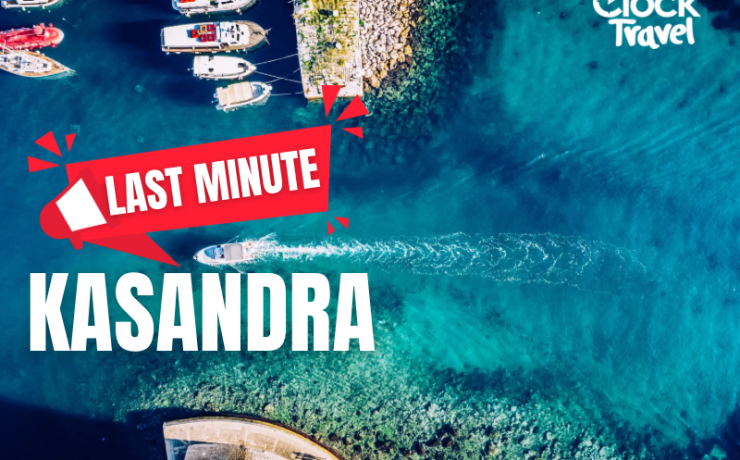
Halkidiki KASANDRA: 19.JUN
Halkidiki kasandra: 21.jun.

Olimpska regija: 23. JUN I 25.JUN

Halkidiki: SITONIJA 24.JUN
Olimpska regija: 03.jul.
Pronađite idealno letovanje po najpovoljnijim cenama
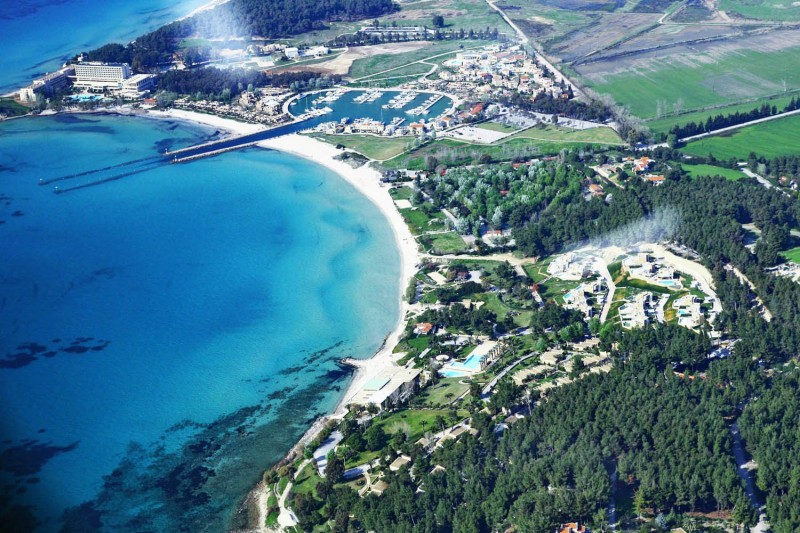
Olimpska regija

Sveti Đorđe
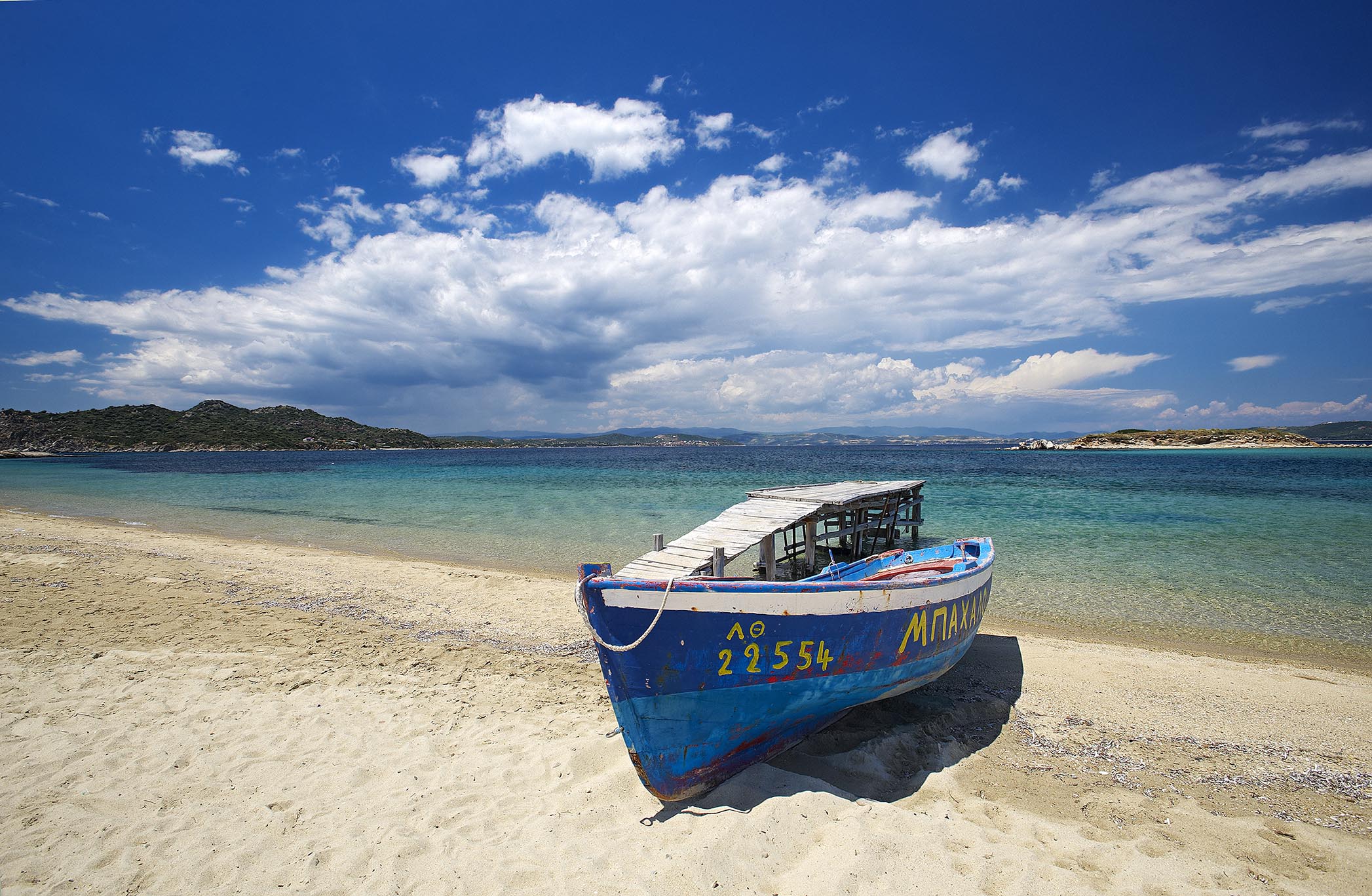
Izdvajamo iz ponude
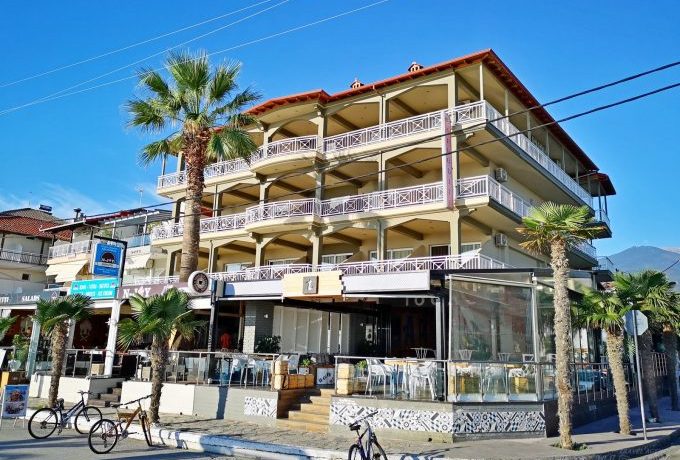
Leptokarija
Vila Afroditi

Vila Ifigenia

Vila Tereza

Vila Panorama 7 noći
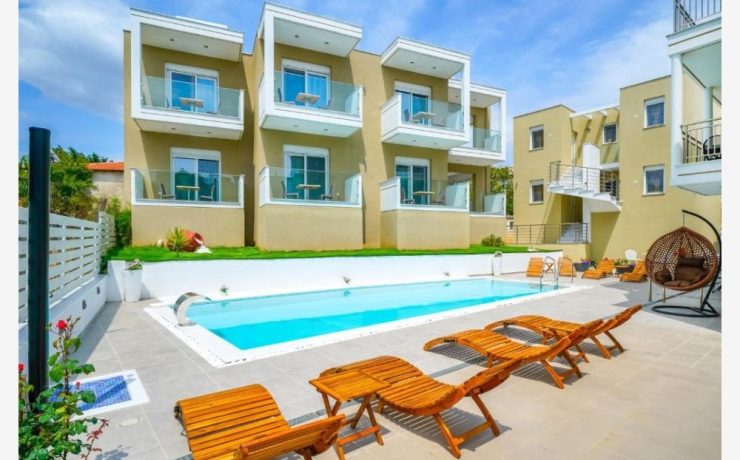
Vila El Greco
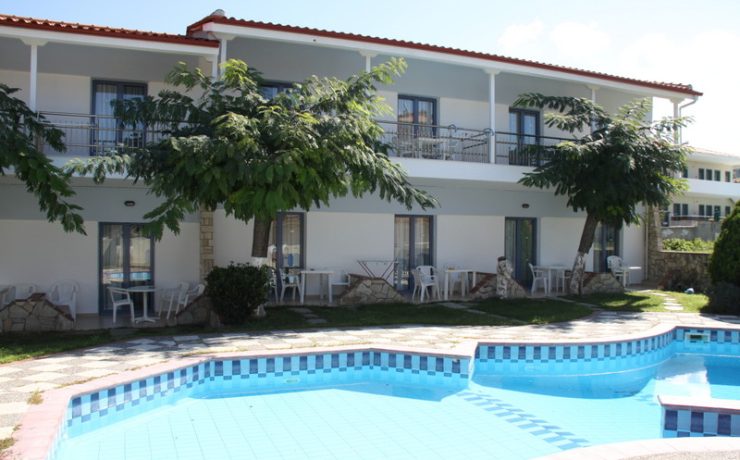
Vila Kosmas

Vila Princ George
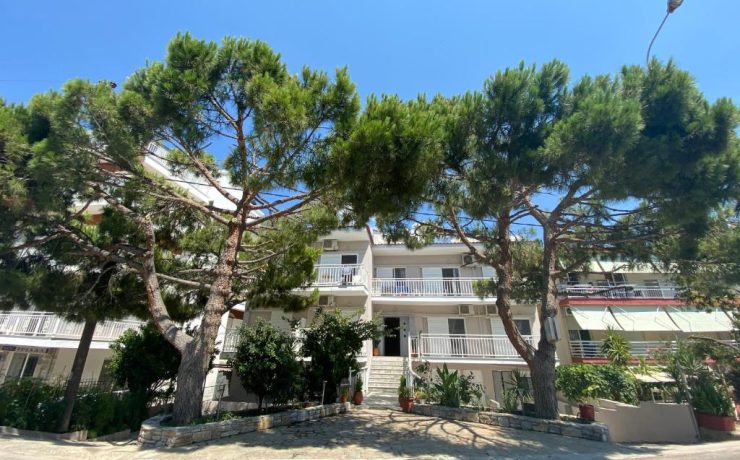
Vila Kyano I termin
popularne destinacije, olimpska regija 49 lokacija, sveti đorđe 20 lokacija, halkidiki 46 lokacija, tasos 13 lokacija, evia 2 lokacije, kušadasi 36 lokacija, sarimsakli 8 lokacija.
Ne propustite najbolju ponudu. Prijavite se za naš newsletter i dobijte najnovije informacije o akcijama i ponudama direktno na vaš email.
Trg republike 6, 18000 Niš
018 / 328 00 88
018 / 305 435
018 / 527 504
066 / 00 555 6
066 / 660 55 66
Radno vreme
Pon-Pet: 09:00 - 20:00
Subota: 09:00 - 15:00
Nedeljom ne radimo
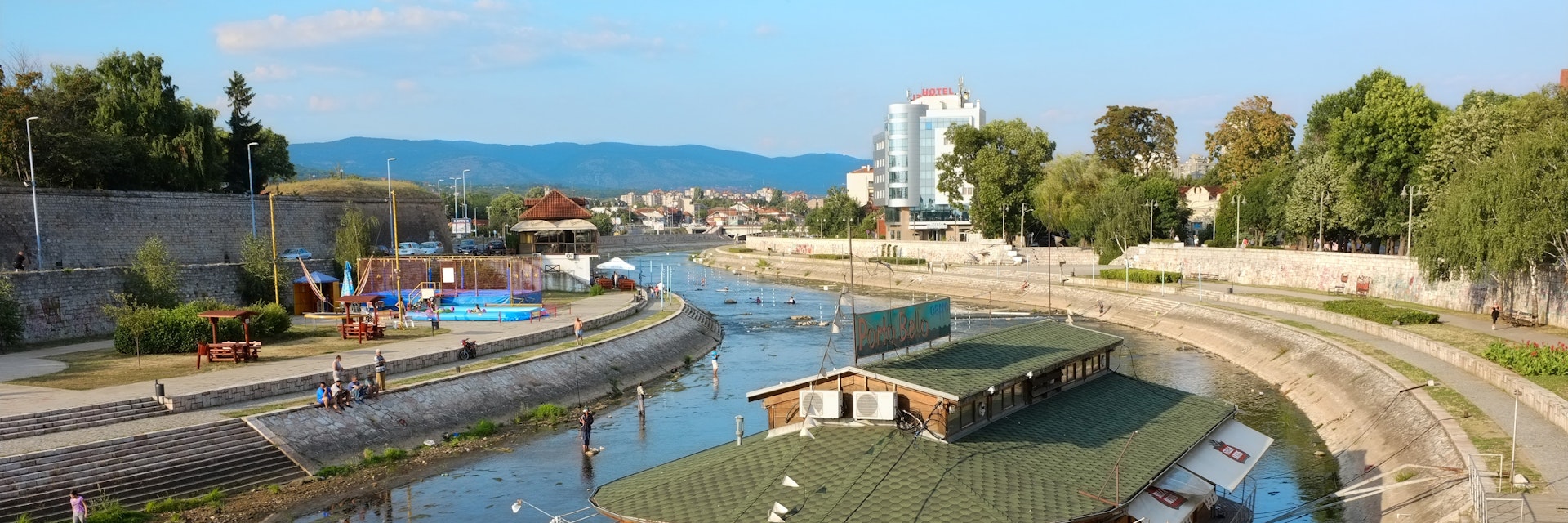
Shutterstock / ollirg
Serbia's third-largest metropolis is a lively city of curious contrasts, where Roma in horse-drawn carriages trot alongside new cars, and posh cocktails are sipped in antiquated alleyways. It's a buzzy kind of place, with a high number of university students, packed-out laneway bars, a happening live-music scene, and pop-up markets and funfairs come summertime.
Attractions
Must-see attractions.

Orthodox Cathedral
Second only in size to Belgrade's St Sava Temple, this huge Orthodox cathedral, completely restored after being destroyed in a fire in 2001, was…

Red Cross Concentration Camp
One of the best-preserved Nazi camps in Europe, the deceptively named Red Cross (named after the adjacent train station) held about 30,000 Serbs, Roma,…

Mediana is what remains of Constantine the Great's luxurious 4th-century Roman palace. The recently unveiled 1000 sq metres of gorgeous mosaics are the…

With Serbian defeat imminent at the 1809 Battle of Čegar, the Duke of Resava kamikazed towards the Turkish defences, firing at their gunpowder stores,…

Bubanj Hill Memorial Park
Bubanj Hill, located 3km from the city centre, is the location of one of Serbia's most recognisable Yugoslav-era spomeniks (memorials). Three gigantic…

Archaeological Hall
Though it's small, this museum is worth a gander for its collection of prehistoric, Roman and medieval artefacts, including coins, jewellery, religious…

Niš Fortress
Though its current incarnation was built by the Turks in the 18th century, there have been forts on this site since ancient Roman times. Today it's a…
Tourist information centres
The Niš Tourist Organization has two tourist information centres and a website. In the tourist information centres one can get information related to tourism in Niš. They also sell maps, brochures, souvenirs and postcards. The website is quite comprehensive and detailed (available in English and Serbian).
- [formerly dead link] Tourist information centre "The Fortress" , Tvrdjava , ☏ +381 18 250222 , [email protected] .
- [formerly dead link] Tourist information centre Niska Banja Spa , Sindjeliceva 3b, Niska Banja , ☏ +381 18 4548588 , [email protected] .
- Tourist Organization of Nis .
As with most of Europe it is usually recommended to travel by train for cost and speed. The trains are old and there have been delays. However, trains will be more comfortable and almost always more scenic.
All buses depart from the central bus station, just behind the fortress and the green market. Same is for trains, but central train station is located a bit far from the bus station, so calculate at least good 20 minutes of walking to reach one from another.
Weekly direct flights are available from Cologne, Frankfurt-Hahn, Istanbul and Ljubljana. Seasonal flights to Turkish, Montenegrin and Greek resorts are offered during the summer. Ryanair has flights to and from Stockholm Arlanda (ARN), Korfu, Malta, and Vienna. In July 2019 the Serbian government gave a subsidy to Air Serbia to start serving Niš out of a range of central European airports.
Niš is on the north-south corridor connecting Belgrade with Skopje , Sofia and on to Thessaloniki and Istanbul . It's a slow but very scenic route.
As of 2023 major upgrades to the line has been announced and most services are replaced by bus or cancelled all together. Works are expected to finish in 2026-27. Updated timetables can be found on Serbian Railways website.
The quickest route from the bus station to the main square (Trg Kralja Milana) is to go left down the side road past all the market stalls and the covered market. This takes you to the fortress entrance from where you can cross the river and head towards the obvious Ambassador hotel.
- FLiX Prevoz ( shuttle service ), Bul. Svetog Cara Konstantina 80-86 , ☏ +38163456515 , [email protected] . Airport shuttle services to Nis, Belgrade, Sofia, Skopje, Pristina, Thessaloniki, Timisoara airports, as well as rides to tourist attractions in area by car or mini van. ( updated Jul 2020 )
The European motorway E75 routes through Niš. From the north, you may use any highway from the Hungarian border over Novi Sad and Belgrade to Niš. From the northwest, you can travel over Austria, via Slovenia and Croatia to Belgrade and then to Niš. These are all modern highways, including the section Belgrade-Niš. It is a fast road with six lanes and 120 km/h speed limit, which locals seldom observe as the road is in a pretty good shape. Beware of the police, though. At this speed, travel time from Belgrade is usually two hours.
The highway continues for another 10 km towards the Bulgarian border, and then turns into a narrower mountainous road to Sofia. Caution is advised here, especially along the 20 km of the beautiful Gorge of Sicevo, starting just after the end of the highway on the outskirts of the city. The other extension of the highway branches to the south, towards North Macedonia and Greece. The fine motorway continues for another 60km south of Niš and then narrows down into a normal road, entering the Gorge of Grdelica, where caution is also advised.
Tolls are paid for highways Niš - Belgrade, Niš - Leskovac (south towards North Macedonia and Greece) and Niš – Sofia.

Downtown area is easily accessible on foot from the bus or train stations, and most hotels and hostels.
For a walk across the whole city in any direction, be prepared to spend at least two or three hours.
Niš is in a small valley, but is surrounded by hills. It is not as bad as in Belgrade, whose central part virtually lies on a number of hills, but in Niš, too, as soon as you get away from broader downtown area, you may find yourself climbing.

Niš has well-established bus lines. Most buses have clear signs stating their directions, and almost all will at one point stop at the central city square, near the Fortress, or five minutes from it, at the King Alexander Square, near the School of Law and Army Headquarters building. There are ticket sellers in the buses. A single ticket, valid for one ride from point A to point B, inside the city zone costs 80 (as of June 2023) Serbian dinars . Weekly and monthly tickets are also available at discount prices in small ticket shops near most bus stops.
Taxi fares range between 150 and 300 dinars, depending on distance (start - 95 dinars + 45 dinars per km). Make sure the taxi driver turns on the taximeter, just in case. Taxis are available practically on every street, and are also reachable by phone - the local 'taxi' phone numbers cover the range from 9701 to 9721 - if you call from your cell phone, don't forget the country and area code +381 18. Pay phones with instructions in five languages are available throughout the town - a phone card must be purchased in any newspaper shop if these are to be used. Most drivers will speak at least basic English. If not, just write the name of the place, site, hotel, or street you are going to and it will be fine. Niš is relatively small and all taxi drivers know all the streets by heart and do not need to consult maps. Taxi rides out of the town (including to Belgrade airport) may be agreed on with the taxi driver (sometimes in a private arrangement, at a much reduced price), but some caution is advised here.
If you come by car, using hotel or hostel parking lots is advised. Car theft is not very common, but foreign license plates and unsecured vehicles parked downtown may be attractive to petty criminals, especially at night. Parking is charged in two zones in downtown area, at about €0.25-0.35/hour. There are clear traffic signs marking the two zones (red - Zone 1, up to 1 hour; green - Zone 2, up to 3 hours, Monday-Friday 07:00-21:00, Saturday 07:00-14:00). This can be paid with a small card purchased in any newspaper shop, where the driver is expected to tick the date and time and leave the card under the windshield of the car so that the traffic warden can see it. Alternatively, you may pay using your cellphone (send an SMS with your license plate number to 9181 for Zone 1 or 9182 for Zone 2 - for instance, NI123456). Failure to pay may result in a €12 fine.
There are a few rent-a-car services in the city. You may check out Euroturs Nis ( http://www.euroturs-nis.co.yu/english.php?page=4),Inter [dead link] Rent-a-car ( http://www.rentacarnis.rs ) or http://rentalex-rentacar.com/ Rentalex rent a car Nis. Rentalex Rent a car Nis is a young agency to rent a car from Nis. It offers cars from the Volkswagen family. Cars have gasoline engines from 1.2 liters to provide extremely low power costs to be more economical. Expect prices ranging from €20-50 a day, depending on the car type and length of lease. The cars are usually fully ensured, but make sure the clerks you talk to have made this clear prior to any arrangement. Rent-a-car is a good option for sightseeing, as there are many interesting things to visit in the 100 km vicinity of Niš in all directions. The roads are getting increasingly better, but be prepared for possible surprises outside main highways leading to Belgrade, Thessaloniki, or Sofia.
Young people usually speak enough English to communicate. Some speak it extremely well. Professionals, such as hotel personnel, speak English and another foreign language. As Niš is a university centre, if you run into some of its 30,000 students, you will have no problems talking to them.
Other officials, such as police officers, have had some basic English lessons, but do not expect miracles.
There can be more problems communicating with the elderly. Still, if you encounter a group of four or five persons, there is a good chance one will know enough English to help you get by.
There are many signposts all around the city in Serbian Cyrilic script followed by English translation which should help you find your way to hotels, central city institutions and sites. Familiarization with basic Cyrilic script would be a good idea, because Serbian national laws encourage traditional script, and Latin script, once all-present in the former Yugoslavia, is becoming more rare. The Latin script is dominant on advertisements and in shops, though.
Occasionally, you may encounter people who speak German, French or Russian, sometimes Italian or Spanish, but this is not very common.
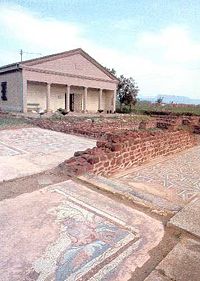
Niš is packed with historical sites worth visiting, dating from various periods.
Further afield
- Mausoleum of Count Alexei Kirillovich Vronsky - lover of Anna Karenina ( in Gornji Adrovac (municipality of Aleksinac) ). The Holy Trinity Church near Nis was built in the 19th century in commemoration of the death of Nikolai Rayevsky. Rayevsky was celebrated as Count Vronsky in Tolstoy's famous novel Anna Karenina.
- Villa of the "ill" Prince George ( in Gornja Toponica ). In 1926, the heir to the Serbian throne, Prince George Karadjordjevic, was committed to the mental hospital on grounds of insanity by his younger brother, Alexander, who was then crowned king. The prince was kept in the spacious villa locked within the mental hospital for 15 years. After World War II, his family were declared state enemies by the communist regime but George was allowed to retire in Belgrade as the only member of the royal family in the country.
- Football: FK Radnički Niš play soccer in SuperLiga, Serbia's top tier. Their home ground is Čair Stadium (capacity 18,000) 1 km southeast of town centre.
- Nisville international jazz festival is held every August on the Summer Stage of the Fortress. With numerous international participants, it has been the trademark of the city since the 1990s.
- Nis Choral Festival is an international festival of choral music, held on the Summer Stage biennially (in July).
- Nis Acting Festival is an international festival of film-acting, once the biggest film festival in the former Yugoslavia (along with the Pula festival in Croatia), with an international reputation. It is traditionally organized in the last week of August, every year. ( http://www.fsnis.org.yu/ [dead link] - in Serbian)
- Nimus is the classical music festival held in late autumn (October-November). Nis is also a centre of classical music in this part of Serbia, with the growing Academy of Arts and the second-by-size Philharmonic Orchestra in the country. The classical music festival includes performances in the Symphony Orchestra building and the National Theater building, with concerts, chamber, symphonic music, and opera.
- Nisomnia popular music international festival is organized in September.
- Market ( between the fortress and the bus station ). The lively market is worth a visit. You can get almost anything you can imagine, and hundreds of local smallholders sell their fruit and veg in the covered market. Also farm made soft cheese.
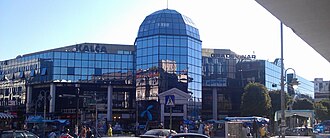
- Forum shopping mall . The biggest shopping mall in Niš. It is a huge, three-storey building, with virtually all kinds of shops: clothes, shoes, music, stationery, computer equipment, unlocked mobile phones... you name it. There are also several bars, coffee shops and one or two restaurants where you can refresh yourself after your spending spree.
- Roda Centar ( formerly Mercator Centar ) ( 2 km from the city centre: catch a taxi to get there ). A nice selection of shops and supermarket with a lot of foreign food products. Since the opening of Forum some shows had to close in Roda due to competition. ( updated Nov 2019 )
- Underground passage . another trademark of Niš, virtually an entire street under the central city promenade. It throngs with small shops of all kinds. They can be a bit cheaper since they often fail to pay VAT.
Niš hosts a variety of grand shopping malls and hypermarkets located on all outskirts of the city, where practically all goods can be purchased. The malls are usually a bit cheaper than small shops and visiting them is advisable if you should need supplies for a longer period of time (food, clothing, stationery, equipment). Major streets contain numerous signs directing a traveler to one of these (Mercator Center, Tempo, Metro, Interex, Impex Mega Market).
Souvenirs are available in small shops in the Fortress, in the central squares of the city, or in shops near historical locations.
The local currency is the dinar . Serbian law does not allow that you pay in euros, dollars or any other currency in the shops, so, if you use cash, you must convert the money into dinars. This may be done in any bank or exchange office, and there are many in the city centre (including some automatic exchange machines in the very core of the city). In addition, a variety of credit cards are welcome in most city shops. Vendors are legally obliged to provide fiscal stubs after any transaction. In practice, many places such as hotels will accept euro notes and give change in dinars.
Niš is a food paradise. It is said that Niš produces the best burek , a sort of greasy, phyllo dough pastry filled with cheese or ground meat that is popular throughout the Balkan peninsula. It resembles a cheese pie, but contains more fat and has stronger flavour. Also, by general consent, it is much more delicious. Some vendors sell other varieties such as apple, spinach or pizza burek (frequently just a combination between the meat and cheese Burek). Traditionally, you eat burek with yoghurt.
The Shopska salad is another phenomenal, yet simple, dish to be found in Niš. It consists of chopped up tomato, cucumber, onion, oil, a little salt and a generous topping of a domestic feta-like cheese. The local feta is usually less sharp than feta typically found in the west by a considerable margin. Most websites with recipes simply call it a brined sheep cheese and the French are known to make a similar feta. Another local trademark is the 'Urnebes' salad, literally translated as 'chaos' or 'pandemonium' - basically cream cheese in oil mixed with ground peppers, garlic and sometimes sesame.
Pljeskavica, sometimes referred to as the "Balkans Burger," is ubiquitous. Typically it contains a concoction of spiced ground beef, pork and lamb. It may be served in a bun, pita bread or by itself on a plate depending on where you get one. It usually is accompanied by onions, a paprika based sauce and in the case of the fast-food-esque vendors you'll have a variety of sauces and toppings to accompany it.
Chevapchichi (usually spelt with accented "c" instead of "ch", i.e. ćevapčići) is similarly made from spiced ground beef, pork and lamb. The mixture is formed into a 2-to-3 inch long sausage and served with onions and a paprika based sauce. Sometimes it will be served in a pita bread for easy, "on-the-go" consumption.
Other favourites include pizza, of which the Serbs do a splendid job, and various pasta dishes.
For those who do not wish to experiment too much, there are many traditional bakeries and pastry shops, and the inevitable McDonald's on the central city square.
Most restaurants have some options for vegetarians. Vegans might encounter more problems, although most are usually solved with the help of kind local restaurant owners. During traditional fasting periods, especially in April before Orthodox Easter holidays, many restaurants offer fish and non-animal food, including some specialties.
In the city centre
- 43.319457 21.892868 1 Etno Ćumurko , Milorada Veljkovića Špaje 4 . ( updated May 2022 )
- 43.317764 21.899882 2 Ekspres Mali Vikend , Nikole Pašića 2 . ( updated May 2022 )
- 43.318849 21.899625 3 Pasta Bar 2x2 , Sinđelićev trg 25 . ( updated May 2022 )
At the Niš Fortress
- 43.324125 21.892491 4 Pekara TVRĐAVA , Đuke Dinić 17 . ( updated May 2022 )
Around the train station
- 43.315552 21.876026 5 Pekara Mićko , Dimitrija Tucovića 27 ( Opposite of the school (gimnazija) ). Small bakery specialising in burek. One of the better burek shops in Niš. The burek is less greasy than in some other bakeries. ( updated May 2022 )
- 43.32139 21.90083 6 Restoran Riblja konoba , Kralja Stefana Prvovenčanog 5 , ☏ +381 18-257728 . 10:00 - 22:00 . Fish restaurant in the centre, where both the cooking and the interior is old-fashioned. The menus are in both English and Serbian, and the waiters speak English. They have salt and fresh-water fish, and other seafood such as squid. During the summer there are tables outside. The cheapest meal would be fried fish (girice) and a potato salad (krompir salata) for about €2 (March 2015). The other dishes are more expensive. ( updated May 2022 )
Tap water is drinkable in Niš. Locals like to boast that, in addition to Vienna, Niš has the best water in central and southeast Europe. Although this claim can probably be contested, the water from the central supply system is drunk by most residents. More cautious visitors are advised to buy bottled water in any shop: a variety of brands are available, and Serbian mineral waters are very good, especially Knjaz Miloš, Vlasinska Rosa, Mivela and Heba. You can also try Jamnica and Jana which are imported from Croatia.
There is a throng of cafes in downtown Niš, most of which serve various coffee drinks, beers and liquors. Some specialty bars serve a more limited scope of beverages. There is also a branch of Costa Coffee on the central square.
Local wines are usually not the best of quality. The more expensive the better. International brands are offered in most bars.
Rakija, a powerful brandy made from various fruits (usually plum or apricot), is a local favorite. Attention: some kinds may be pretty strong for a newbie.
Nightclubs in Niš are somewhat different than those typically found in Belgrade or in other larger cities. Firstly, there is relatively little dancing and most clubs don't feature a dancefloor. Instead, clubs have tables and most people stand at their table and drink, while listening to the music. Tables must be reserved beforehand, though this is usually for free.Secondly electronic dance music is quite rare, with most clubs playing folk music instead.
Most clubs have only a Facebook page, so check that to see what they're doing that day.
- 43.32131 21.89443 1 Feedback , Davidova ( Next to the defunct synagogue ). This placed is alternative, playing rock and metal and occasionally electronical dance music.
- 43.31853 21.89409 2 [dead link] Vavilon , Nikole Pašića 36 .
- [dead link] Simphony club , Generala Milojka Lešjanina . Unusual for playing electronical dance music. Also a somewhat "fancy" club.
- 43.32146 21.89479 3 Cubo klub , Balkanska 2 . Lively atmosphere, and often crowded. They play mostly folk music.
- Diamond , Prijezdina 4 .

Niška Banja (the Spa) has a couple of older but decent hotels, such as Ozren , with prices from €24 for a single room incl breakfast. Alternatively, it may be possible to arrange a home-stay in Niška Banja. The spa is a few kilometers away from the town, so a bus or taxi ride to the centre is inevitable.
- The Ambassador Hotel . The tallest building on the central square, dominates the downtown area, and is one of the few options for visitors on a budget. The rooms are not as cheap as one might expect and feel a little outdated but they are comfortable enough and the hotel is in a great location. If you want a real Yugo experience , try this hotel, dark brown formica fittings, appliances that might or might not work, and an amazing restaurant with retro sculptures and chandeliers, a flashback to the 1960s. €42 for an apartment with en-suite. Expect ~€30 breakfast included .
- My Place ( just by the Nišava rive ). In a quiet quarter in the downtown area, a couple of minutes from the central square on foot From €65.50 (2014) .
- Niški cvet ( Nis Flower ). Expect €50 or more/night, with buffet breakfast included. .
- Regent Club Hotel , Obrenoviceva Street . Entrance is via Gorca shopping mall in the city's main promenade street
- Aleksandar Palace , Njegoseva 81a , ☏ +381 18 562 333 , fax : +381 18 562 056 . A hotel on the hills overlooking the city from the southern side with a small pool. around €60-80/night .
- 43.31957 21.8975 1 Panorama , 51 Svetolika Rankovića Str, , [email protected] . A bit more remote up the hill, but also with a nice view of the city, and with a bit lower prices. Taxi needed from over here, especially upwards. Sgl/dbl €45/55 (2014) .
- 43.32075 21.89801 2 New City Hotel and Restaurant , Vožda Karadorđa 12 ( Centre of Niš ), ☏ +381 18 504 800 , [email protected] . Accommodation, coffee bar and a restaurant with international cuisine, conference rooms with simultaneous translation. The hotel has 48 rooms and suites, two large halls for conferences and banquets and a cafe, bar & restaurant. Free internet access throughout the hotel, separate parking space. ( updated Jan 2017 )
- 43.32069 21.89231 3 Sweet-Hostel Nis' , Milorada Veljkovica Spaje 11/4 ( There is a map on the website ). Another hostel in Nis. It is in the centre of town, 5 minutes from The square of King Milan (main city square). They offer comfortable rooms and welcoming, hospitable service for a small amount of money. Hot showers and free towels are there as well, as is a fully equipped kitchen and a shared room with TV, DVD & very slow Internet access. Hostel single/double 1650/2200 dinars; apartments single/double 2200/3200 dinars, including tax (2014) .
- 43.3098 21.8626 4 Hostel Kosmopolit , Anastasa Jovanovica 15 ( in `Ledena Stena` area: taxis are cheap, or you can use a direct bus line number 1 `Ledena stena - Niska banja` exiting at the station called `MIN naselje` ), ☏ +381 63 472705 , [email protected] . Hostel `Kosmopolit` is a beautiful contemporary building with 120 m² of residential space and a spacious garden. Services and amenities include free high-speed internet, WiFi, garden barbecue grill and bar, self-service kitchen with dining room and balcony, lounge room with self-service bar, cable TV and computer with internet, air-conditioning in every room, 24 hour service and assistance. €11 per bed (8-bed dorms and private rooms) .
Nis is a very safe city. In summer months, even late into the night, you will see people walking through its streets with no fear whatsoever. In winter months, late at night, and in suburban areas, some reasonable caution is warranted. As with any other travel, keep your money, cell phones, travel documents and other valuables in secure places. As a pedestrian, follow regulations, including zebra crossings and green lights, even when you see locals ignoring them, as traffic wardens may jump out of nowhere and fine you.
Emergencies
In case of an emergency, call 192 (police), 193 (fire), 194 (ambulance) or the European standard 112.
In case of injury or illness, the place to go is the Hitna Pomoc (Emergency Aid Centre) of Nis Clinical Centre. If the urgency is not total, you may ask for help in the state Clinical Centre (follow the white signs with this name in the streets) or any of the numerous small private clinics scattered downtown. Be aware that not all medical facilities are well-stocked or have personnel that speak foreign languages, including English. Cash payment on the spot will almost certainly be required for medical services. Consult the embassy of your country, if possible.
Serbia has a social insurance agreement with most European nations. If you get a form from your local health insurance you can obtain free treatment in the local hospitals. You would first need to go to the national social insurance (RZZO) branch office in Niš to hand in the form and get another form for the local hospital or health centre. Since this procedure is complicated to complete without Serbian language skills it may be easier to visit a private doctor or polyclinic. Prices are very reasonable by European standards, starting from €10 for a simple consultation with a PD.
Pharmacies are located all over the central city zone. They are marked with green crosses in front of the entrance. Their working hours are 07:00 to 21:00 or even 22:00 every day, including weekends. The central pharmacy, located in front of the National Theater building, a 2-minute walk from the central city square, is open 24/7. Serbia is still very liberal in terms of purchasing medication, so you are allowed to buy practically any basic drugs over the counter (painkillers, fever medication). However, for antibiotics a prescription is required. Prior consultation with a physician would be a good idea, though.
- Sofia and beyond to the east ( Buses and trains both available ).
- Skopje . Buses and trains both available
- Belgrade ( frequent bus and train service ).
- Bosnia and Herzegovina , Montenegro or Croatia ( can catch a bus ).
- Kopaonik National Park ( Take the bus from the Niš bus station to Kruševac bus station at 07:25. Then the bus to Kopaonik at 10:00. The bus stops near the Konaci complex in Kopaonik. The total trip costs around €10. ).
- Kosovska Mitrovica , Kosovo ( twice daily going over Novi Pazar (Serbia) ). Arrive to Mitrovica there should change bus if going to Priština or somewhere else.
- Priština , Kosovo ( only one direct bus ).
- Germany , Swiss and France . Companies like Eurolines-Lasta, Touring, Jedinstvo or Niš-Ekspres, have long-distance buses to almost any bigger city.
- Has custom banner
- Articles with formerly dead external links
- Articles with dead external links
- Has map markers
- Airport listing
- Go listing with no coordinates
- Has mapframe
- See listing with no coordinates
- Buy listing with no coordinates
- Eat listing with no coordinates
- Drink listing with no coordinates
- Sleep listing with no coordinates
- Has routebox
- Usable cities
- Usable articles
- City articles
- All destination articles
- Has Geo parameter
- Pages with maps
Navigation menu
- Top Things To See And...
Top Things To See and Do in Niš, Serbia

The overwhelming majority of visitors to Serbia tend to stay north in Belgrade and Novi Sad, but more fool them. Niš is the centre of activity in the south, and there is plenty to see and do in Serbia’s third largest city. Lovers of grisly history are in for a treat here.
Explore the fortress.
The undoubted centre of touristic life in Niš is the city’s eponymous fortress . Built way back in the 18th century, this monumental stone structure is one of the best preserved of its type in the entire region, although that isn’t to say its history has been smooth sailing since the Turks put it together. Its position on the banks of the Nišava river guaranteed a tumultuous existence, before the occupying Bulgarians used it as a prison during World War II. The fortress is thankfully pleasant today, and plays host to some of the finest tourist attractions in Niš. The Stambol Gate marks the start of a veritable maze of sights, from old mosques to Roman forums via modern monuments and plenty more.

Grimace at the grisly Skull Tower
The most famous tourist attraction in Niš didn’t start life as a beacon for photographs and interested visitors. The Skull Tower was every bit as grim as the name suggests, and was constructed to warn the local Serbs against another rebellion. The tower was built in 1809 using the skulls of 952 fallen Serbian rebels, but less than 100 of the heads remain today. Despite this it remains one of the most important spots in the entire Balkan region.

The Red Cross Camp
Continuing with the miserable theme, the tough times in Niš did not end with the expulsion of the Ottoman Empire. The Nazis occupied the area during World War II, and a concentration camp was set up in the city. Crveni Krst was initially intended to be little more than a transit camp, but the bloodthirsty violence of fascism soon saw it used for more nefarious means. A memorial museum stands on the site of the camp, one of the best preserved in the entire region.

Marvel at the Three Fists
More than 10,000 individuals were murdered at Crveni Krst, and those civilians are remembered in a memorial park above the city. Bubanj Spomen Park is a sombre place at the best of times, and the Three Fists memorial encapsulates the crushing loss of World War II better than most of its type. Three monolithic concrete fists shake at the sky, signifying the men, women and children who perished in the camp. The park is a popular spot for locals during the summer, although the picnics and drinks are at odds with the inherent darkness of the area.

Take to the skies
There is more to do in Niš than merely explore the misery of the past, and this remains one of the best spots for paragliding in all of Serbia . The city is surrounded by mountains and gorges , and there may not be a better way to experience them than by taking to the skies. Mount Koritnik is a good place for beginners to start.
Eat, eat, eat and eat
This part of Serbia is famous for its food , and with good reason. The best burek, pljeskavica and the rest are almost certainly found in the region around Serbia’s third largest city . Vegetarians may be in for a tough time around these parts, but carnivores should come to Niš with hearts in their eyes and plenty of space in their tummies. This is an unquestionable paradise for gluttons.

Become a Culture Tripper!
Sign up to our newsletter to save up to $1,665 on our unique trips..
See privacy policy .

Wander down Tinkers Alley
Tinkers Alley was exactly what you think it was — a street full of coppersmiths and other metal workers plying their trade as the people of Niš went about their days. The alley is a shade of its former self, and the tinkling you hear now is more likely to be pint glasses than creation, but the street remains one of the most enjoyable parts of Serbia’s third largest city.

Discover the ruins of Mediana
A hugely important archeological site can be found in the eastern part of Niš. Mediana dates back to the late Roman period, to the time when Niš-born Constantine the Great was in charge of the vast empire. It hints at a mighty efficient and luxurious society, although such things are expected from the residency of the leader. Evidence of the Romans is found all over the city, but Mediana is the best spot for concentrated history.

Culture Trips launched in 2011 with a simple yet passionate mission: to inspire people to go beyond their boundaries and experience what makes a place, its people and its culture special and meaningful. We are proud that, for more than a decade, millions like you have trusted our award-winning recommendations by people who deeply understand what makes places and communities so special.
Our immersive trips , led by Local Insiders, are once-in-a-lifetime experiences and an invitation to travel the world with like-minded explorers. Our Travel Experts are on hand to help you make perfect memories. All our Trips are suitable for both solo travelers, couples and friends who want to explore the world together.
All our travel guides are curated by the Culture Trip team working in tandem with local experts. From unique experiences to essential tips on how to make the most of your future travels, we’ve got you covered.

Bars & Cafes
The 7 best bars in niš, serbia.

Restaurants
The 10 best restaurants in niš, serbia.

Guides & Tips
How to spend 24 hours in niš, serbia.

The Best Coffee Shops and Cafés in Niš, Serbia

See & Do
The most beautiful architecture in niš, serbia.

Places to Stay
The best hotels in niš, serbia.


5 Great Day Trips From Niš, Serbia
- Post ID: 2101823
- Sponsored? No
- View Payload

Naslov 3 Dolor sit amet
Due to its exceptional location at the crossroads between the East and the West, the city of Niš has always been a favorite stronghold of great rulers.The Celts gave it a rather subtle name Naissus – the nymph’s city – that stands in contrast to the true power of a mighty military fortification.The height of its strength and splendor was reached during the reign of Emperor Constantine the Great, who transformed this city into an administrative and trading centre of vital interest to the Roman Empire. Niš is an ideal city for history lovers. Traces of history are visible in every corner of the city, while friendly and welcoming inhabitants of Niš will be glad to introduce you to some of the most interesting historical details.
One of the oldest cities in Europe, Niš is a history lovers paradise – every corner of the city showing traces of bygone eras. The friendly, welcoming locals will delight in sharing their knowledge of the city with you.Previously named Naissus – the nymph’s city – by the Celts, it’s strategically important location at the crossroads between East and West means it has always been a favourite stronghold of great rulers. However, it was in fact during the reign of Emperor Constantine the Great, that this city was transformed into an important trade centre for the Roman Empire. Early Christian tombs from the reign of Constantine the Great have been found and archaeological excavations at Bubanj and Humska Čuka have also found evidence that the area was inhabited as far back as the Neolithic period and the early Bronze age. A true melting pot of different cultures and people throughout the ages - Celts, Romans, Huns, Avars, Byzantines, Ottomans have all been known to inhabit the area which is reflected in the architectural diversity. Today, Niš is a hub for culture and art lovers and hosts a number of annual festivals such as Niš Film Festival which celebrates Serbian films and film-makers. Organised every August, this internationally important film festival has been held for more than 50 years. The city is also the setting for two music festivals, also during the summer months, the world-famous jazz festival Nišville and the Nisomnia festival.
Phone: +381 (0)18 524 877
Email: [email protected]
Website: http://visitnis.org
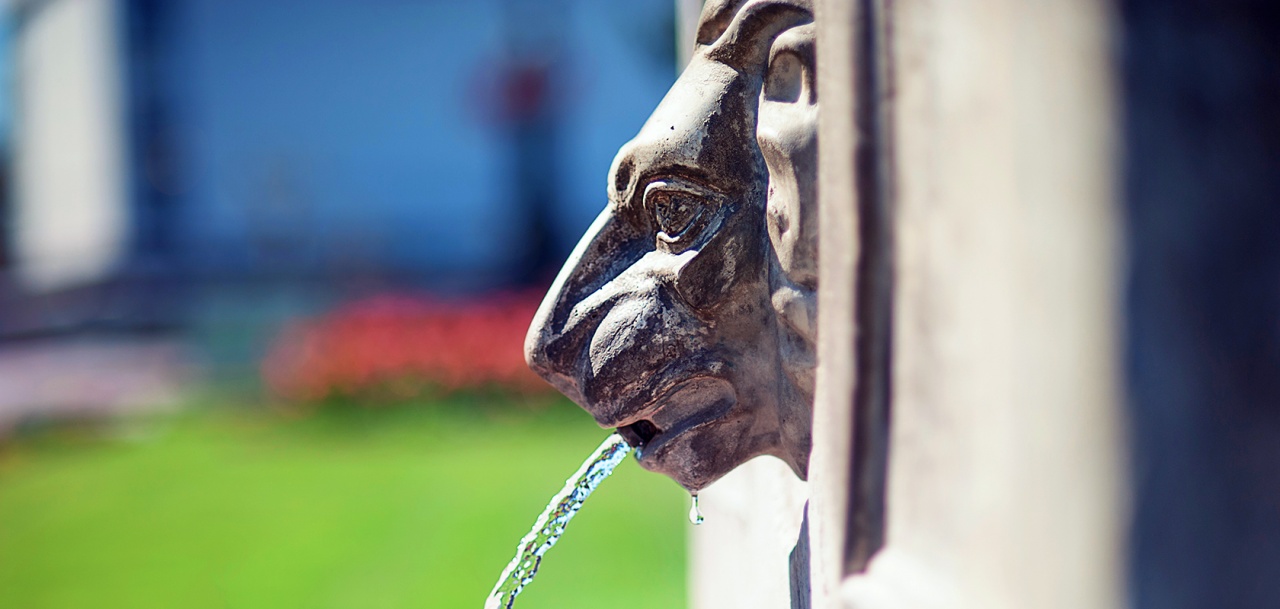
Accomodation
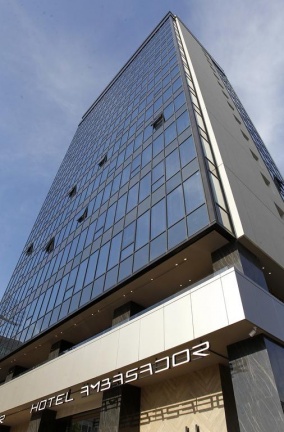
- 69 Number of rooms
- 116 Number of beds
- 22 Single rooms
- 36 Double rooms
- 11 Apartments
- 1 Number of conference rooms
- 60 Conference rooms capacity
- Coffee longue
- Parking space
- Buisness center
- Fitness room
- Room for non-smokers
- Hairdresser
- Pets in rooms allowed
- Credit card accepted
- Bathroom and toilet
- Room-service
- Airconditioned room
- Room with telephone
- Internet connection
- TV in the room
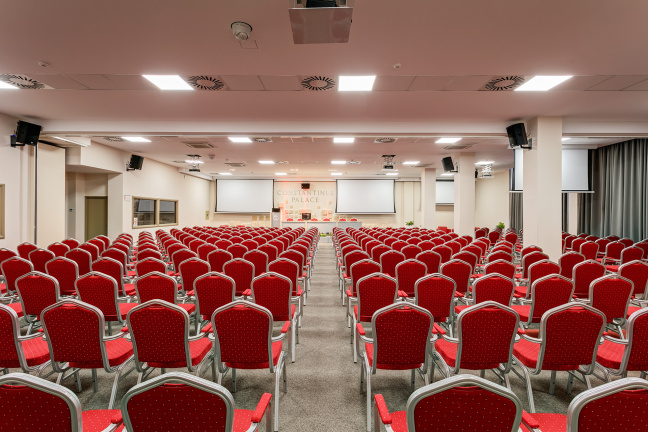
- 45 Number of rooms
- 84 Number of beds
- 42 Double rooms
- 3 Apartments
- 400 Conference rooms capacity
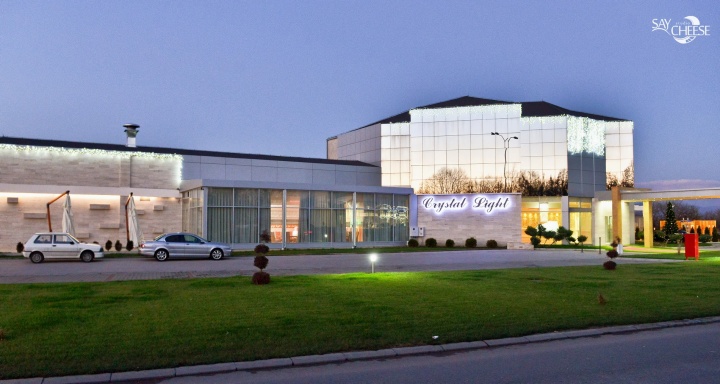
- 23 Number of rooms
- 46 Number of beds
- 16 Double rooms
- 17 Apartments
- Facilities for handicapped persons
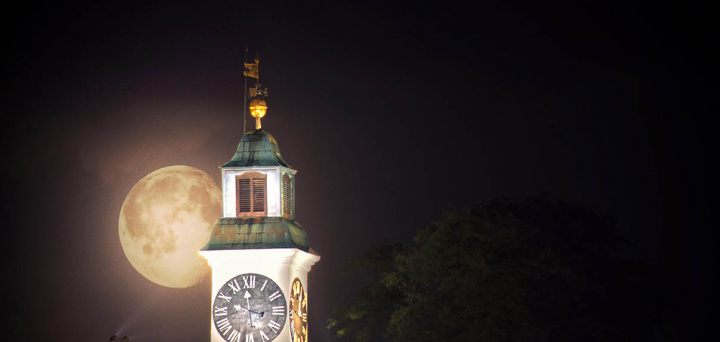
Top Things To Do In Niš On A Weekend – Nis Serbia Guide

Written by our local expert Guru
Written by a local specialist we know and trust to bring you the most up-to-date travel information.
History, culture, great food, and fun are available in spades in Niš, Serbia. Here is your guide to the best things to do in Niš this year.
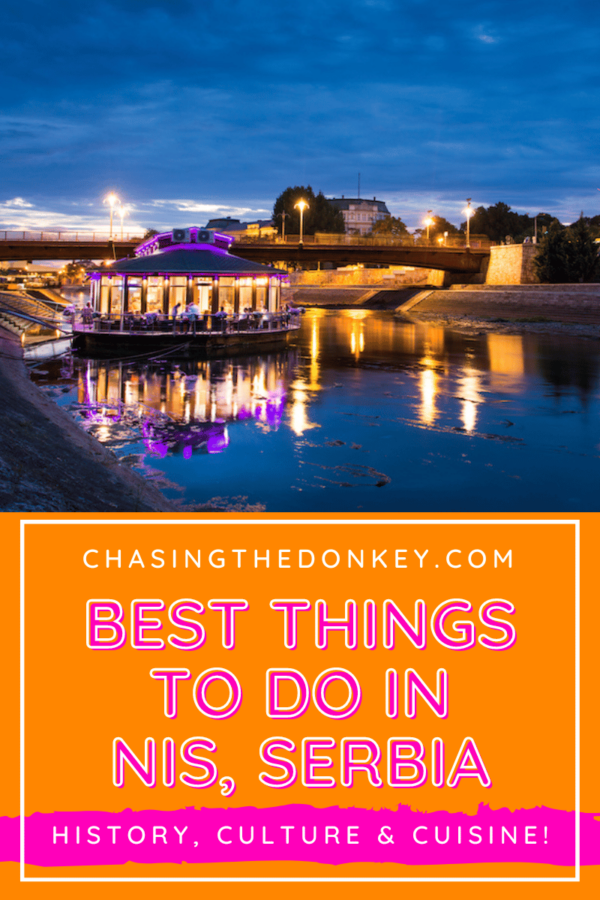
Things To Do In Nis
We know you’ll enjoy your time in Serbia’s third largest city – the city of Niš, as there is so much to do, such as:
- Andonović Palace
- Čair Fountain
- Crveni Krst Concentration Camp
- Explore the complex history of Niš
- Indulge in the diverse gastronomic scene
- King Milan Square
- Medijana archaeological site
- National Museum
- Niš Fortress
- Nišville Jazz Festival
- Religious sites
- Skull Tower
- Tinkers’ Alley
- Visit the birthplace of Roman emperors
- Holy Trinity Cathedral
If you opt for a trip to Serbia , you will be in for a delightful surprise. The country is full of friendly people, great food, and fascinating sights, with Belgrade standing as its crown jewel .
However, do not think other cities are worth your attention because you will be making a big mistake. Niš, for example, is a popular spot you really should make a part of your itinerary when traveling through the country.
History, culture, great food, and fun are available in spades, so if possible, try to stay in the city for at least a few days. And if you do, you should plan ahead of what to visit.
Here are a few suggestions of things to do in Niš that will help you make the most of your time there:
Skip Ahead To My Advice Here!
What To See & Best Things To Do In Niš
Given the city’s long history, there are plenty of sights to look forward to here. Different periods brought distinctly different styles as a consequence of various cultural influences. Because of that, you could tour the city for days and still not see everything worth noting. Therefore, if possible, try to spend as much time here as you can. Here are just some of the reasons why.
1. Ancient Niš Fortress
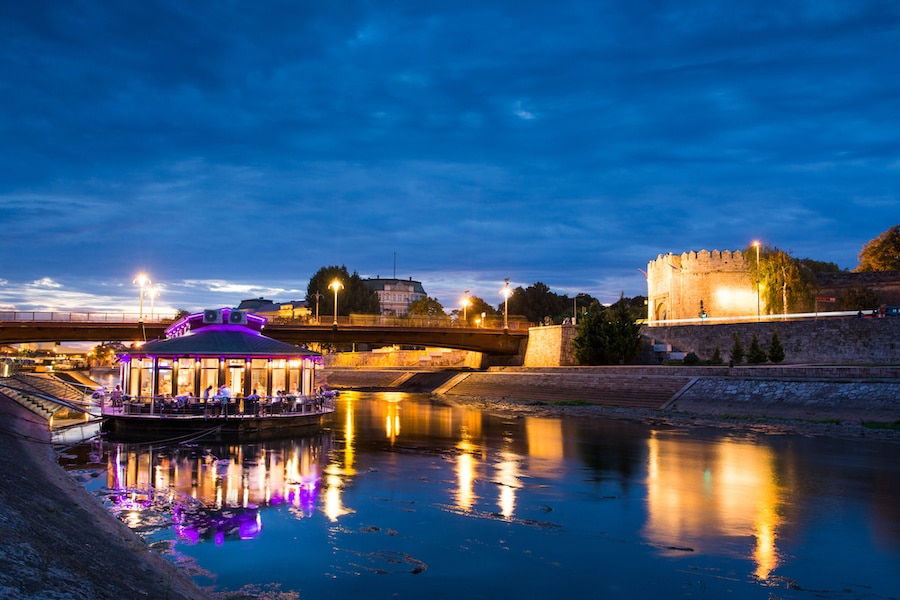
The Niš Fortress is arguably the city’s most important thing to see . The Ottomans created its current iteration in the early 18th century. Still, pretty much every culture that ruled this area had a fort in this exact place – the Romans, the Bulgarians, the Serbs.
It is located on the northern shore of the Nišava and boasts fantastically preserved walls and gates, leaving me in awe when I first saw them.
Perfectly preserved, while at the Nis Fortress, you can imagine the battles taking place around it. Inside, you can see loads of interesting pieces from the city’s history, which adds to the experience and helps you get a clear picture of just how tumultuous the city’s history was. It’s a great place to visit , no doubt about that!
2. Skull Tower
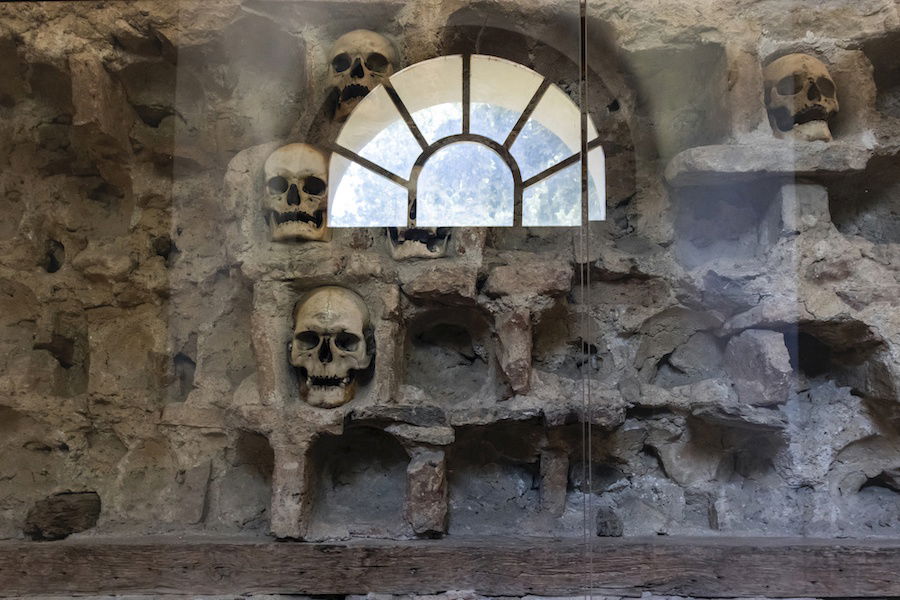
Sounds spooky. Well, it really is! The Skull Tower (Ćele kula in Serbian) is a relatively unique piece of architecture built by the Ottomans in the early 19th century. Its purpose was to scare the local population into submission after the First Serbian Uprising had failed. And let me tell you something – these are real human skulls, which still work.
Into the tower’s sides are embedded the skulls of Serbian rebels who fought against Ottoman rule. Seeing that they are being overrun, the rebels’ leader, Stevan Sinđelić, initiated a huge explosion, killing himself, his soldiers, and many enemies in the process.
Yes, seeing the remains of those people like that may shock you a little, but the place also gave me a lot to think about, and I sincerely recommend you visit it.
3. Tinkers Alley
What was once a street filled with artisans and merchants is today a great place to relax and unwind in the very heart of Niš. Another relict of Ottoman rule, Tinkers Alley (Kazandžijsko sokače), was built in the 18th century. However, the merchants were slowly pushed out of there as time passed, with the last ones leaving in the late 20th century.
However, they were replaced by numerous bars, restaurants, and even hotels, so if you’re looking for a place to do some people-watching, this is absolutely it.
Niš is also quite famous for its gastronomy, which you can also experience here, and staying in a hotel in this alley really is something special. I went through it in the evening and instantly fell in love with the place. It’s vibrant, romantic, and hip, all simultaneously, and the locals are extremely friendly.
And since I was here in the evening, some dinner was in order. We ended up in “Kafana Galija,” and my God was that dinner good! A spectacular array of traditional meat dishes was served to us, everything very reasonably priced. The food here really is something special, so a trip to this alley should be an obligatory part of your Niš visit!
4. Andonović Palace
Also in the city center, in Obrenovićeva Street, is Andonović Palace. Now, this was not a place used by any king or anything of the sort. No, instead, it was the home of a wealthy merchant. Built in the period between World War I and World War II, this is an exquisite example of neoclassical architecture that is very much worth at least a minute of your time when you’re walking through the city center.
Seeing something like this makes you wonder what living in a mansion like this feels like — it puts my one-bedroom apartment into perspective. Nevertheless, the front of the house was spectacular, and I’m certainly glad I stopped by it.
5. National Museum

Slightly west of Obrenovićeva is the city’s National Museum , i.e., its Archaeology Hall. Now, you can see a whole lot of things here, and the objects cover the period from the Neolithic all the way to the Middle Ages.
There are some fascinating pieces of jewelry inside and tons of ancient art. If you don’t know anything about the city’s history, you will be very pleasantly surprised by the size of the collection here, just like I was. It paints a vivid picture of the history of this place.
6. Religious Objects
The only mosque still in use in Niš today, Islam-aga’s mosque, is the last public building the Ottoman Empire built in the city. Once upon a time, there were no less than 19 mosques in the city, but this one is the only one that has preserved its original function.
Many other mosques can be found inside the fortress, but they have either been repurposed and today serve as museums or abandoned altogether.
But that’s not all; it is interesting to see the church known as The Catholic Church (close to the National Museum) because this is the first Roman-Catholic parish in Serbia (people here are predominantly Orthodox Christians). I must say it’s a stunning piece of architecture, especially on the inside.
Add to that the fact that there is also a synagogue in the city, which now serves as the National Museum’s gallery, and you will realize how diverse Niš’s history is. It is a fascinating story, but unfortunately, the Jewish community here did not survive the horrors of WW II.
7. Čair Fountain
Just up Obrenovićeva Street, towards the river, is the Čair fountain. In my honest opinion, it is a beautiful place because of all the greenery and flowers around the fountain, and a great place to snap a few pictures for your social network accounts.
The fountain itself was moved several times, but the current location is also its original one. Made of granite and with lion’s heads spewing out water from their throats, it is quite an exciting site, definitely, something architecture fans will want to see.
8. King Milan Square
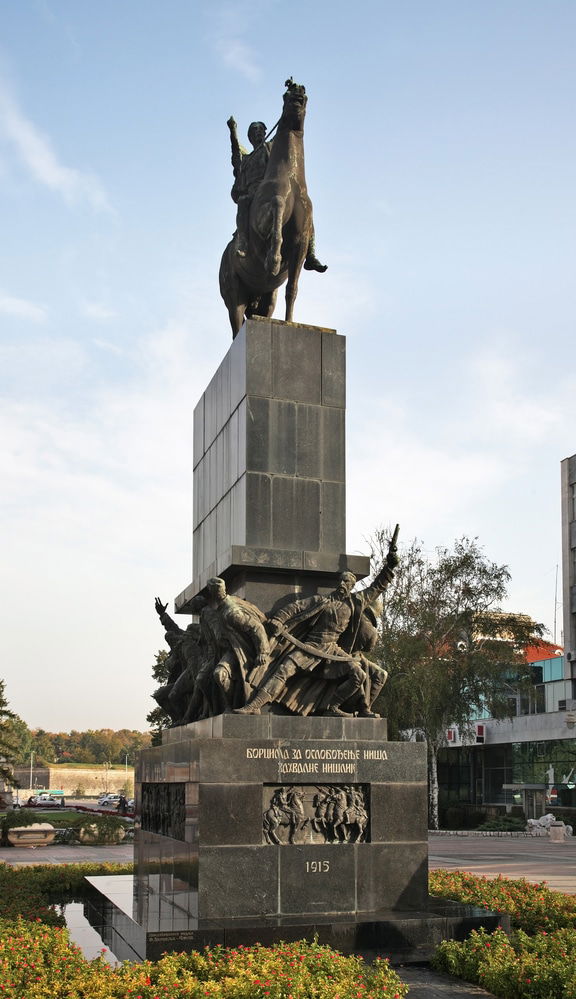
The fountain stands opposite King Milan’s Square, which is the main city square and really a lovely place if you want to spend a sunny day out in the open. The brick-colored covering of the square left quite an impression on me because they somehow looked quite inviting and relaxing. It’s really a great place to sit down for a chat with a friend.
But on the square is also a beautiful statue dedicated to the city’s liberators, both from the Ottoman Turks and from WW I. As a matter of fact, I learned later that this is one of the most important Yugoslavian sculptures, and I could clearly see why. It brings the whole square to an entirely new level. Check it out!
9. The Mayor’s Office
Yes, it may sound a bit strange, but the mayor’s office in Niš is a pretty impressive sight to behold. As a matter of fact, this is considered to be one of the most beautiful, if not THE most beautiful, public buildings in Serbia . I can’t imagine a prettier office and could see myself working in a building such as this one.
Located next to King Milans Square, it was built in 1925 and is another excellent example of neoclassical architecture in the city. Loads of ornaments, grandiose entrances, vast staircases, and many other remarkable features all make this public office very special indeed. Another beautiful building to check out – yes, there will be a lot of walking in this part of Niš, but it will be well worth it.
10. Medijana
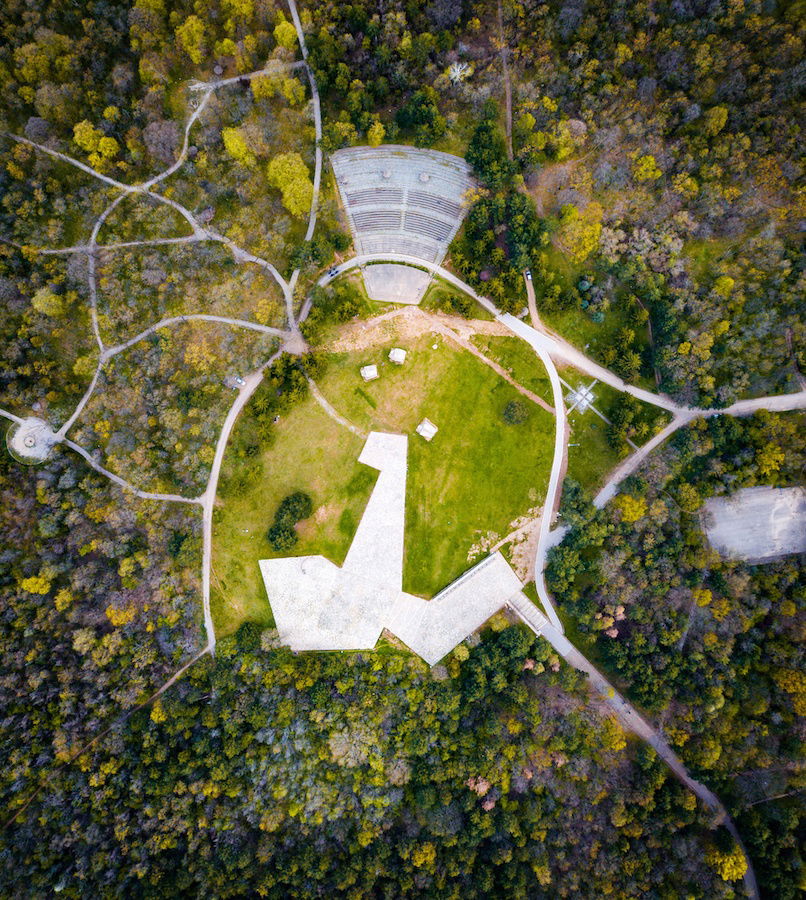
You might say that I’ve saved the best for last with this one because Medijana is a vast archaeological park dedicated to the ancient town of Naissus (today’s Niš). There is plenty to see here, from luxurious villas to infantry barracks, but I couldn’t get to it because the park was closed for renovation.
Still, because this was all built during the reign of Constantine the Great, with whom the city has an inextricable link, you really should make it a part of your itinerary. You will have to pay for a ticket and travel to the city’s eastern outskirts, but it will be well worth the money and effort.
11. Crveni Krst Concentration Camp – Red Cross Concentration Camp
The Crveni Krst Concentration Camp, located in Niš, Serbia, holds a significant place in history as a reminder of the atrocities committed by German soldiers during the Second World War. Established by Nazi Germany in 1941, this nazi concentration camp served as a detention and execution site for thousands of innocent civilians, Serbian revolutionaries, resistance fighters, and political opponents.
The prisoners endured unbearable conditions by the German Gestapo, including overcrowding, torture, and malnutrition. The camp’s dark legacy is symbolized by the chilling presence of the crematorium chimney, where countless lives were tragically lost.
Today, the Crveni Krst Concentration Camp stands as a somber memorial site, allowing visitors to remember and honor the victims while fostering an understanding of the importance of human rights and peace.
12. Holy Trinity Cathedral
Niš, Serbia, boasts a remarkable cathedral that is not to be missed.
Built following the Treaty of Paris in 1856, the cathedral stands as a testament to the Ottomans’ commitment to recognizing the rights of Christians in their empire. Its architectural style is a captivating blend of Serbian-Byzantine, Neo-Renaissance, and Baroque influences, creating a visual feast for visitors.
Inside, the cathedral’s beauty unfolds with the meticulously restored interior, featuring 48 icons in the iconostasis, originally painted by the renowned Realist artist Đorđe Krstić.
Although the original icons were tragically lost in a fire in 2001, the cathedral stands proudly with its restored splendor. Marvel at the craftsmanship and immerse yourself in the rich history as you explore this architectural gem in the heart of Niš.
14. Mediana Archaeological Site
The Mediana archaeological site is a captivating destination that beckons history enthusiasts and curious travelers alike.
This ancient Roman estate offers a mesmerizing glimpse into the past, showcasing the lavish lifestyle of the Roman elite—Marvel at the well-preserved remains of luxurious villas, including the impressive residence of Emperor Constantine the Great.
As you wander through the intricate mosaics and intricate ruins, you’ll be transported back in time, imagining the vibrant social gatherings and opulent feasts that once took place here.
The site also features a museum where you can further immerse yourself in the rich historical context and unearthed treasures. Savor the opportunity to walk in the footsteps of ancient Romans and discover the secrets of Mediana, an archaeological marvel that tells the story of a bygone era.
15. Nišville Jazz Festival
Prepare to be swept away by the infectious rhythms and soulful melodies at the Nišville Jazz Festival in Niš, Serbia – held every August.
This vibrant musical extravaganza is a must-visit for jazz fans and music lovers from around the world. Set against the backdrop of the city’s historical charm, the festival brings together internationally acclaimed jazz artists and local talent, creating an unforgettable experience for all.
From smooth jazz to lively improvisations, the festival offers a diverse lineup that caters to all musical preferences. Immerse yourself in the captivating performances, soak up the electric atmosphere, and let the enchanting beats ignite your passion for music.
Whether you’re a seasoned jazz enthusiast or just looking for an unforgettable cultural experience, the Nišville Jazz Festival promises a dazzling celebration of music that will leave you spellbound.
Brands We Use And Trust
Where to stay in niš.

Hostel Day’ N’ Night. Its central location, comfortable beds, and friendly staff make this one of the most highly rated hostels in Niš.
ArtLoft Hotel. Located in the heart of Niš, this quirky hotel features modern rooms with paintings from local artists and has numerous bars and restaurants nearby.
Good Night. Just 300 meters from the bus station, Good Night’s minimalist design and cozy rooms make it a top pick for mid-range hotels .
Best Western Hotel My Place. Located right on the Nišava River and facing the fortress, My Place is the place to stay if you’re looking for affordable luxury. Its restaurant has panoramic views, and breakfast is included in the room rate. With plenty of urban attractions, a bustling café and bar scene, and picturesque towns, Serbia is still one the cheapest destinations in the Balkans and a place not to be missed.
What You Need To Know About Niš
Niš is the third-largest city in Serbia, right after Novi Sad and Belgrade, with approximately a quarter of a million people. If you have the time, spend at least one day in Belgrade ; you’ll love it! It is the industrial center of the country’s south and holds immense value for the whole of Serbia both in terms of history and culture.
Niš is one of the oldest cities on the Balkan Peninsula , and its layout is defined by the Nišava, the river that flows through the city. Given the numerous historical sites in and around the city , some of which date back to ancient times, Niš is a popular tourist destination.
In contrast, the locals appreciate it immensely for its gastronomy. Trust me; you won’t be hungry here. But since the history of this city is such a big deal, it deserves a part of its own in this text, so let’s get to it.
Move This Adventure To Your Inbox & Get An Instant Freebie

No spam. Unsubscribe at any time.
How To Get To Nis From Within The Balkans
Getting to Niš, a significant city in southern Serbia known for its historical importance and vibrant culture, can be conveniently managed from various points within the Balkans. Here are some of the common ways to reach Niš:
Niš Constantine the Great Airport (INI) serves the city. Although it’s smaller and has fewer connections compared to Belgrade’s Nikola Tesla Airport, it offers direct flights to several European destinations, mainly operated by low-cost airlines. Depending on your starting point, flying to Niš might require a connection, potentially in Belgrade or another regional hub.
Buses are a popular and efficient way to travel within the Balkans, and Niš is well-connected by international and domestic bus routes. Direct buses run from many Balkan cities, including Belgrade, Skopje, Sofia, and others. The central bus station in Niš is located near the city center, making it convenient for travelers.
Niš is on the railway line connecting Belgrade with Sofia, Thessaloniki, and beyond, making it accessible by train from several locations in the Balkans. While train travel can offer scenic views and a unique experience, it’s worth noting that trains in this region are be slower and less frequent than buses.
Driving to Niš is another viable option. The city is accessible via the E-75 and E-80 European highways, which are part of the Pan-European Corridors. These roads make Niš easily reachable from neighboring countries. If you’re renting a car, ensure you’re familiar with the local driving laws and have the necessary documents to cross the border.
A Brief History Of Niš, Serbia
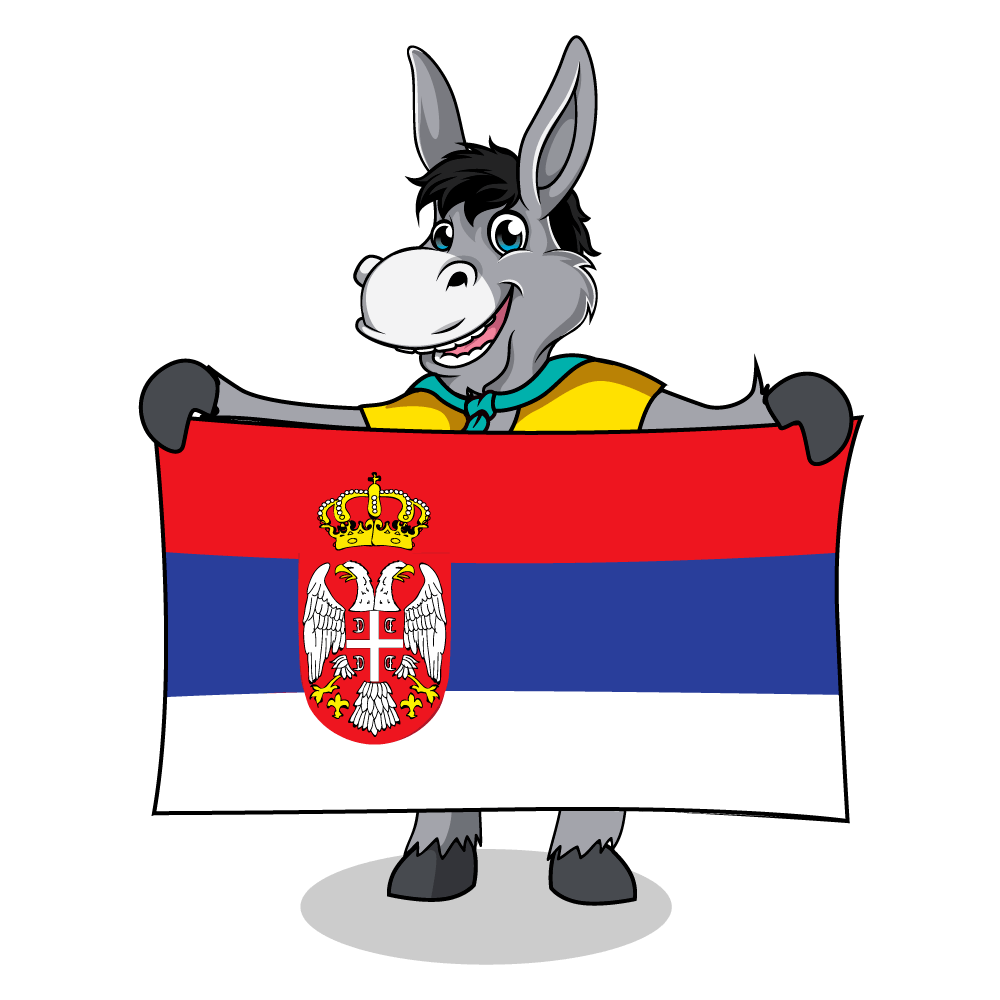
The history of Niš is a long and interesting one. While people have been living around here for thousands of years, the settlement that would become modern-day Niš was founded in the early 3rd century BC by a Celtic tribe called Scordisci. Later, it became a part of the Roman (and Byzantine) Empire, with medieval Serbia taking control of it in the 12th century.
However, in the mid-15th century, the city became part of the Ottoman Empire and remained there for more than 400 years. That’s why you can not see the influence of Islam in the city, but we’ll get to that a bit later.
The city is also notable in world history because three different Roman emperors were born here: Justin I, Constantine III, and Constantine the Great. The latter was actually the first Christian Roman emperor. The city is so proud of the fact it was the birthplace of the Roman emperor Constantine that it named the city’s airport is named after him. With that short history lesson over, let’s take a look at the sights you need to visit while visiting Niš.
So, tell us, what will be the first thing you see in Niš when you arrive?
- Hostels In Serbia Can Be Found Here
- Day Trips From Belgrade
- Things To Do In Belgrade
- Hiking Via Dinarica
- Best Souvenirs To Bring Home From Serbia
- A Guide To Bring Your Pet To Serbia.
- 7 Best Ski Resorts In Serbia
- Travel Itineraries For A Weekend Trip To Serbia
Thank you for the detailed description of the city’s sights! We enjoyed visiting them!
Leave a Reply Cancel reply
Your email address will not be published. Required fields are marked *
Save my name, email, and website in this browser for the next time I comment.
This site uses Akismet to reduce spam. Learn how your comment data is processed .
Subscribe To Unlock Your FREE Customizable Travel Packing List & All Our Best Tips!
Unlock Your FREE Customizable Travel Packing List!
Subscribe Now For Instant Access To Stress-Free Packing
- 10 Remarkable Tourist Attractions to Visit and Things to Do in Lisburn
- 11 Interesting Things to See and Do in Rothenburg ob der Tauber, Germany
- 12+ Astonishing Tourist Attractions to See and Things to Do in Nantes, France
- 14 Stunning Tourist Places to Visit and Things to Do in Helsingborg, Sweden
- 12 Incredible Attractions to See and Things to Do in Saariselkä, Finland

16 Interesting Tourist Attractions to See and Things to Do in Niš
Niš or Nis is a city in Serbia and the administrative center of the Nišava district. It is primarily well known for its illustrious history and great archaeological wealth. Some of the best things to do in Nis , Serbia are concerned with the history of Roman, Ottoman, Byzantine, Nazi Germany and the Independent Serbian Empire. The city is also well known for being the birthplace of several prominent Roman Emperors such as Constantine the Great, Constantius III, Julian, Constans, Vetranio, Valens, Justin I, and Valentinian I. Some of the best places to visit in Nis , Serbia will tell you the story of these legendary rulers.
The city is named after the Nišava river and has a history going back to the 3rd century BCE when Celtic tribes had settled here. There are very few aspects of this era to be witnessed when you visit Nis, but there are archaeological exhibits and roman records which tell the story of these early settlers. The city was later captured from the Goths in the Battle of Naissus by Roman Emperor Claudius Gothicus. The majority of Nis tourist attractions are concerning the roman and byzantine periods. This includes archaeological sites, museums, historical buildings, churches, streets and so on. Under the byzantine rule, Niš was declared an Imperial City. This showcases the city’s significance during that time.
The region was later captured by the Ottoman Turks and was ruled by them for about 400 years. Though there are relatively few things to see in Nis , Serbia which hails from the Ottoman rule. Many of the symbols and buildings of this period were destroyed or rebuilt after the liberation of Niš in 1878. You would still come across a few mosques, streets, markets, public squares, historical buildings, houses and public buildings during Nis sightseeing , which was developed during the 19th century, which was towards the end of the Ottoman rule in the region.
On the cultural side of Nis travel, you should definitely indulge in the culinary delights of the city such as Burek, Shopska Salad, Urnebes Salad, Balkans Burger, Chevapchichi and so on.
This Blog Post contains affiliate links. If you purchase anything from that link then I may earn a small part of the commission and for that, you do not need to pay any extra amount.
Table of Contents
The Top 16 Tourist Places to Visit in Nis, Serbia
1. nis fortress.
This fortress was built in 1723 during Ottoman rule. The fortress has been built around a roman citadel which itself has 2,000 years of history. It is one of the most important historical places to visit in Nis Serbia. You will need about 2 hours to tour this fortress.
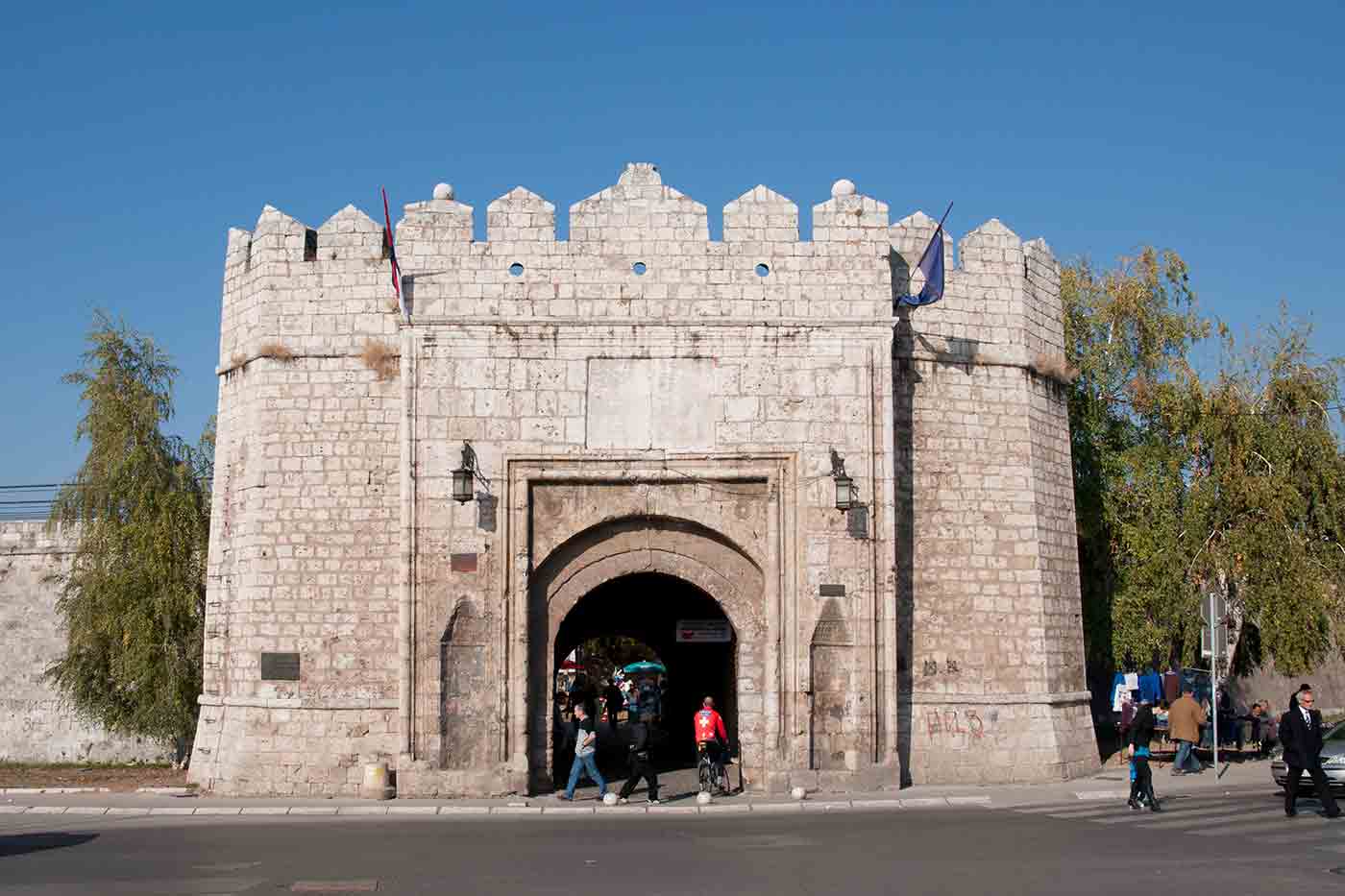
2. Skull Tower
This macabre tower resulted from the first Serbian uprising. The skulls belonged to fallen soldiers and were put in the tower to send a message. It is one of the most unusual things to see in Nis Serbia. You will need about an hour for this tower.
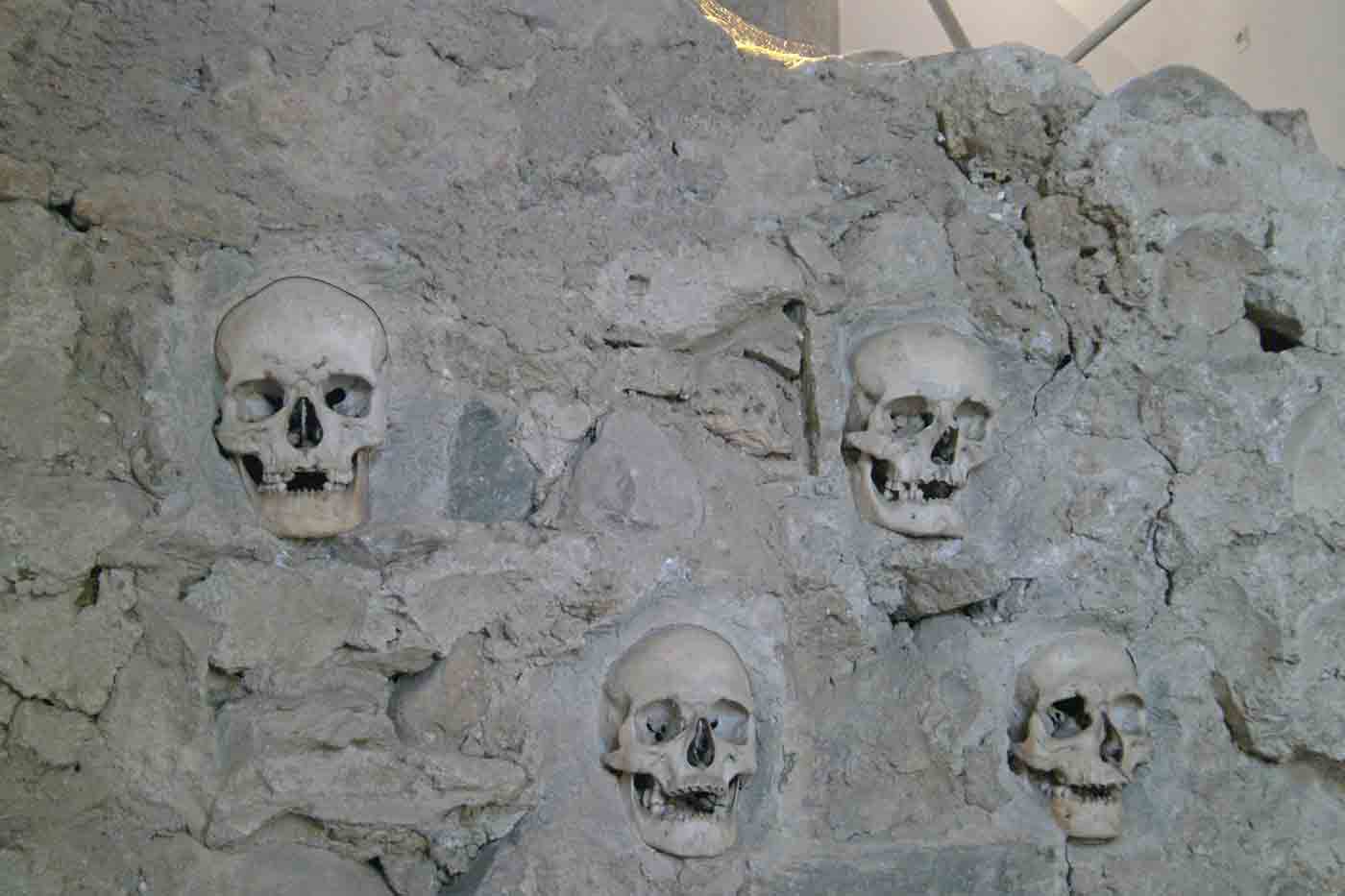
3. Mediana Archaeological Site
This site was captured by Romans in 75 BCE and was an important camp on the Military route between Constantinople and Belgrade. It is also considered to be the birthplace of Emperor Constantinople. A visit to this site is among the most popular things to do in Nis Serbia. You would need about 2 hours to tour this site.
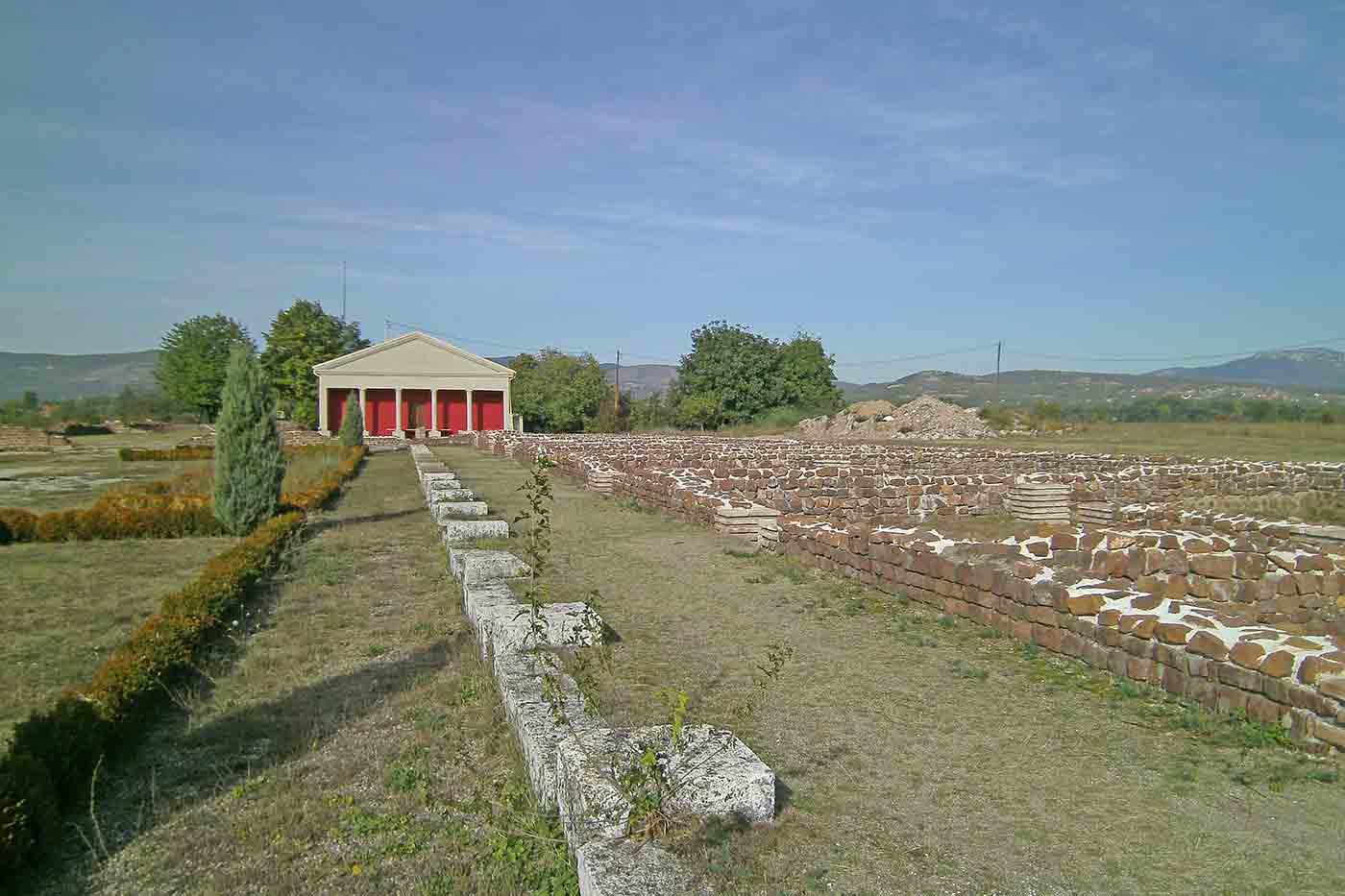
4. National Museum of Nis
This museum tells the story of the region through archeological exhibits. Some of the artifacts go all the way back to the bronze age. This is one of the first places you should check out when you visit Niš Serbia. It will help give context to the rest of the attractions. You will need about an hour to explore this museum.
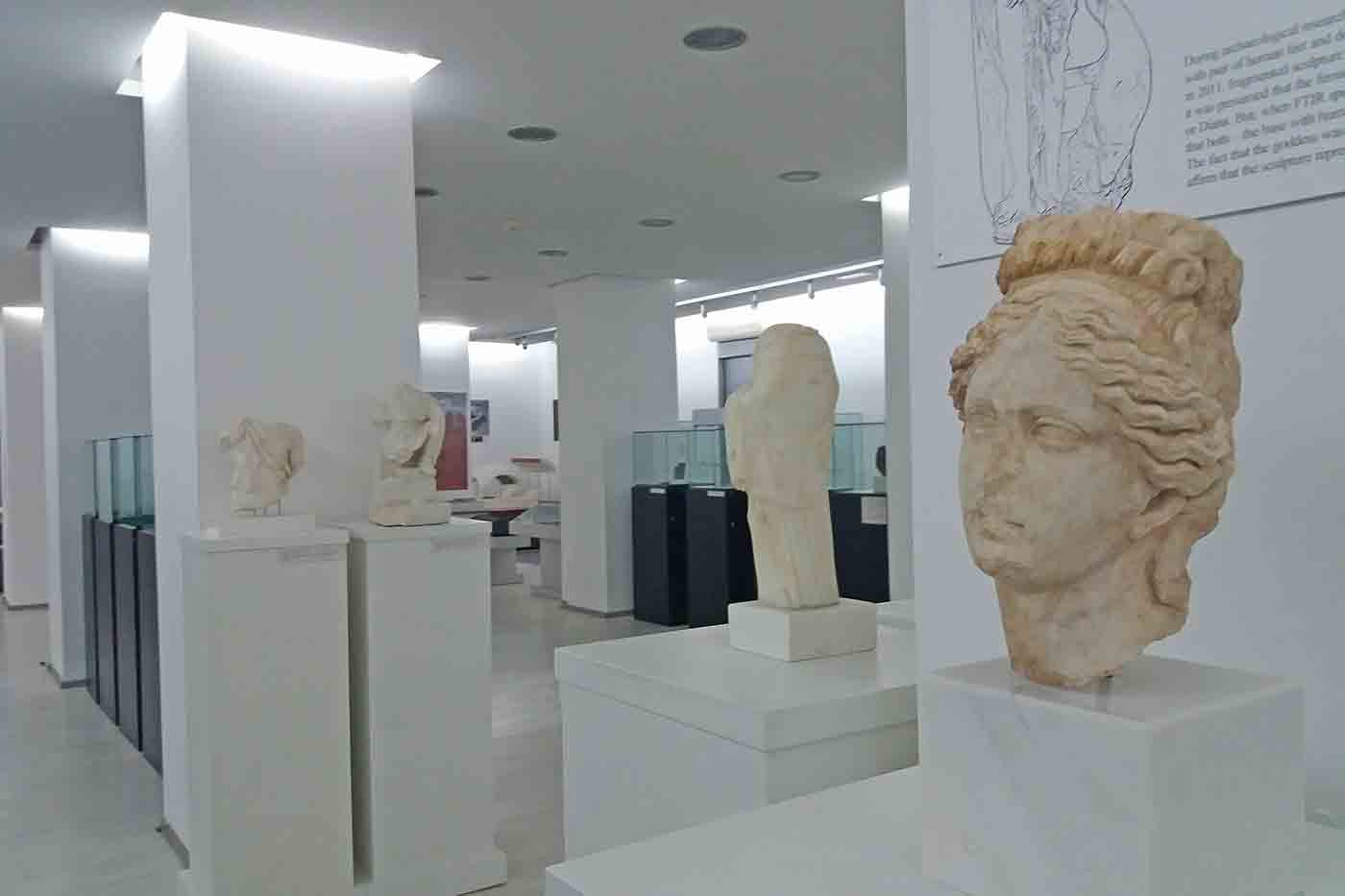
5. Tinkers Alley / Coppersmith Alley
This quaint little alley is the last surviving craftsmen’s quarter in the city. The street came into existence around the 18th century under Ottoman rule and has played an important role in the city’s economy and culture. It is one of the best places for Nis sightseeing. You can still lay eyes on 18th and 19th-century buildings while indulging yourself with cafes and restaurants along the way. It will take you at least an hour to enjoy this street.
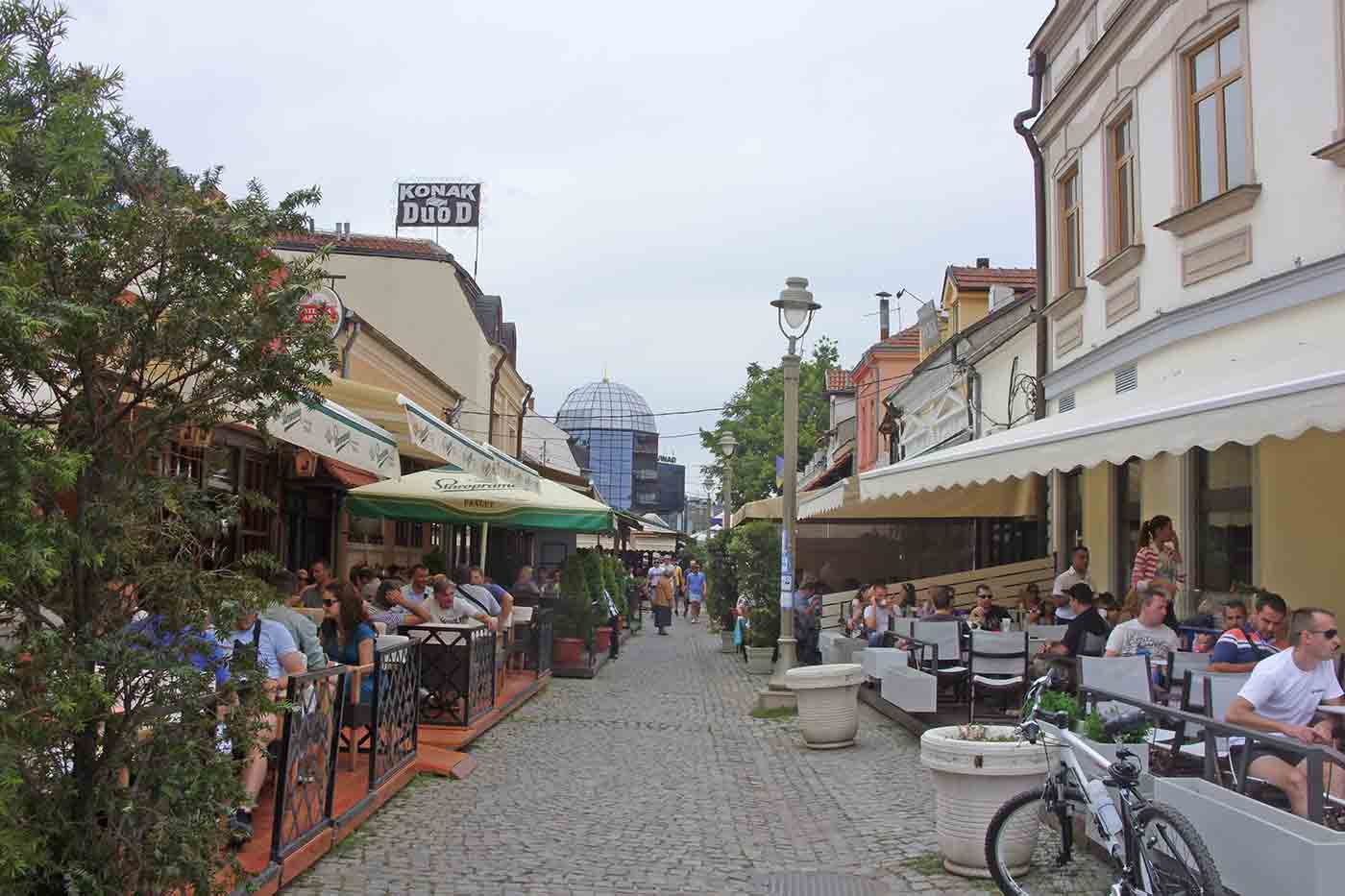
6. Crveni Krst Concentration Camp
Also known as the Red Cross Concentration Camp, this place has been the site of several horrific crimes under Nazi rule. It was used to imprison, torture and execute Jewish, Romani and Serbian people. This camp is one of the most horrific places to see in Nis travel. It will require about 2 hours to tour this facility.
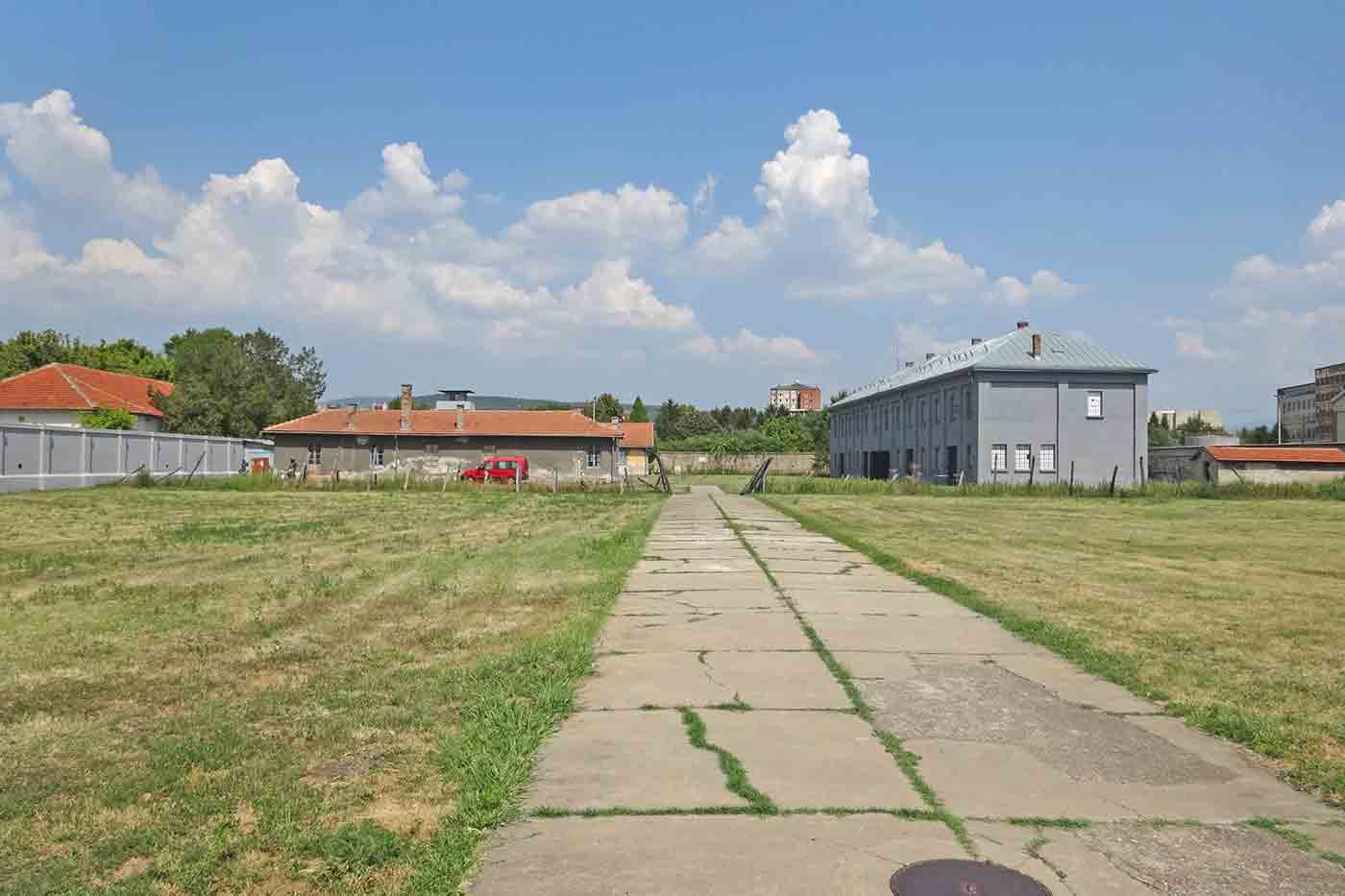
7. Bubanj Memorial Park
Mount Bubanj was the site of the execution of 10,000 people who were held at the Red Cross concentration camp. This memorial site is dedicated to them. It is one of the most poignant Nis attractions. Designed by Ivan Sabolic, the three fists symbolize the defiance of men, women and children in the face of adversity and death. You will need 30 to 45 minutes at this site to pay your respects.
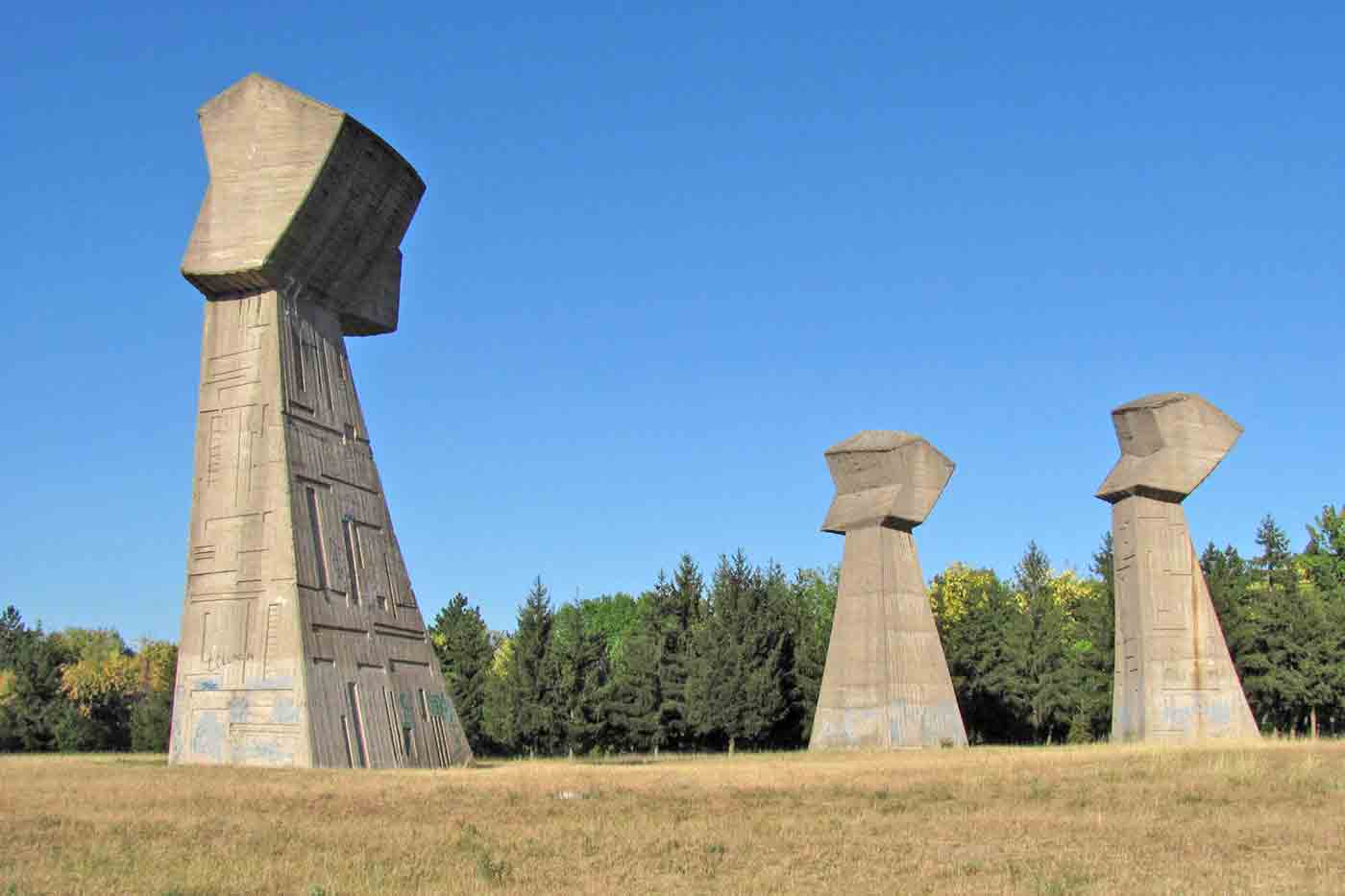
8. Latin Church of Gornji Matejevac
This Byzantine Church was built in the 1,000s and sits atop Metoh Hill. It is one of the last remaining monuments from the rule of the Nemanjic Dynasty. If you are wondering what to see in Nis Serbia while exploring the outdoors, this is your answer. You would need 30 to 45 minutes for this church.
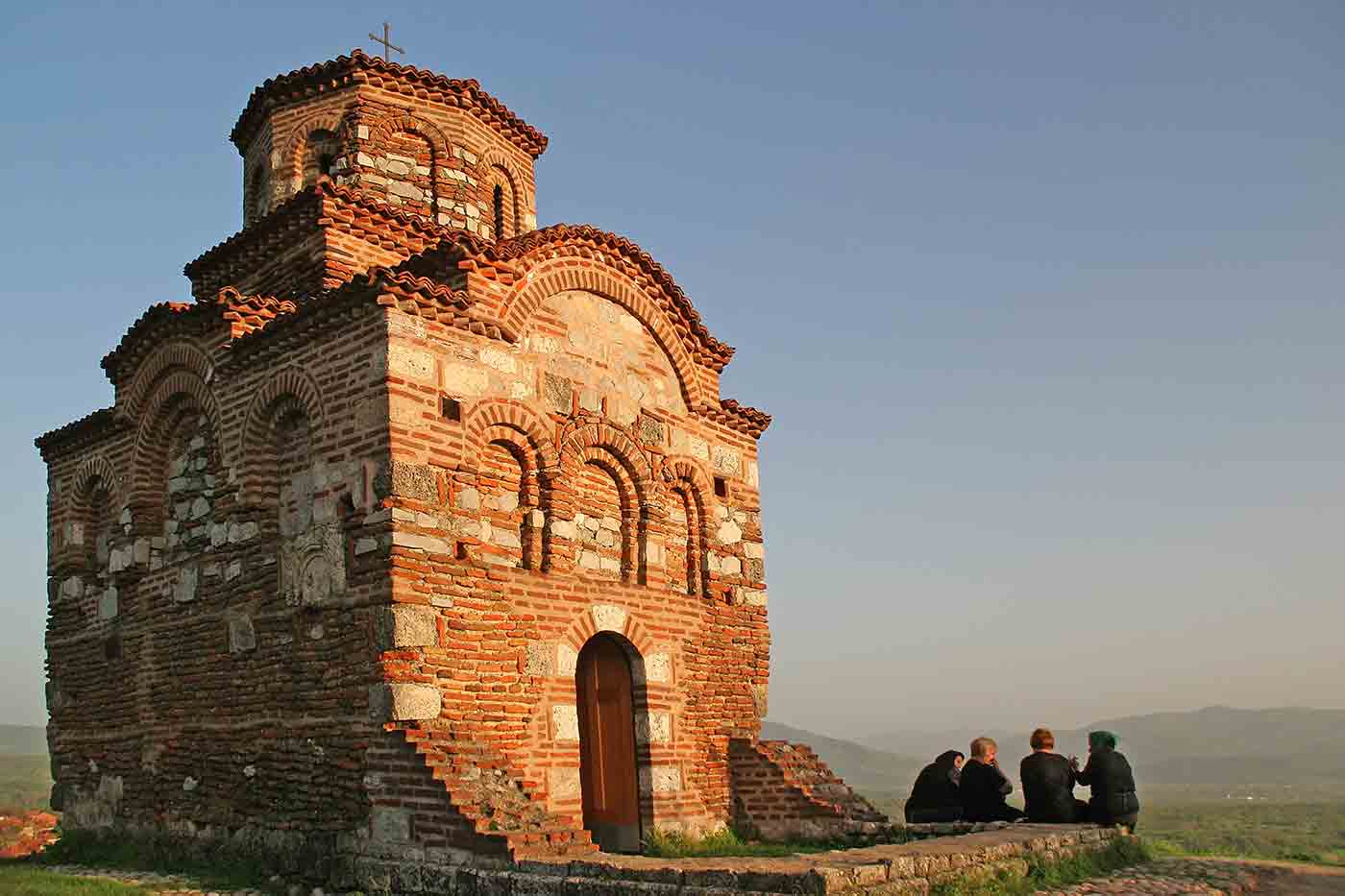
9. Holy Trinity Cathedral
This church resulted from the 1856 Treaty of Paris which required Ottomans to recognize Christianity in their empire. The church was completed in 1878 and is one of the most important cultural Nis tourist attractions. It is known for its blend of various architectural styles and its altar. You will need 30 to 45 minutes to explore this church.
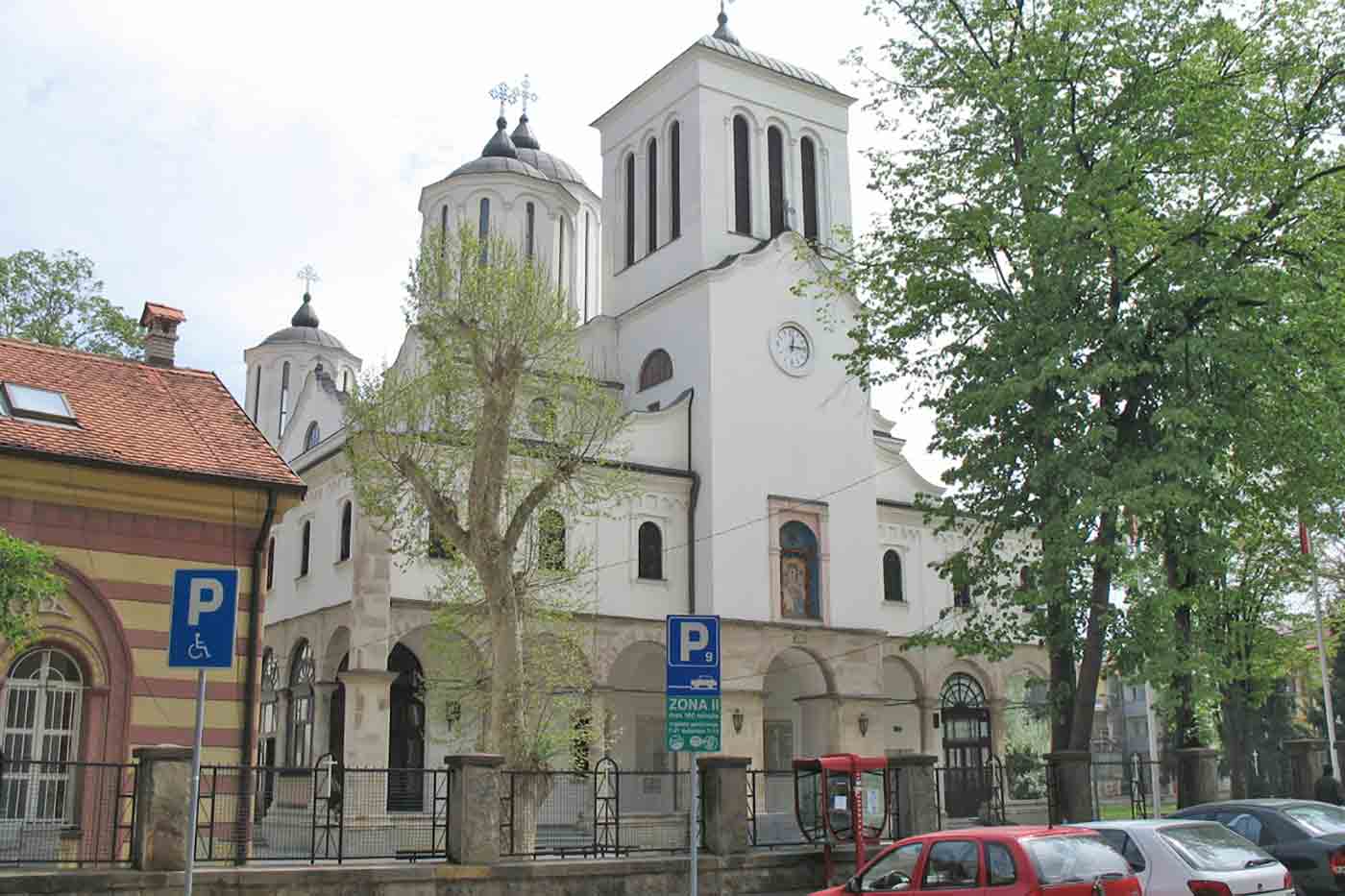
10. King Milan Square
This public square was founded in the 1720s and soon became a major market of the city. It had a distinctly Turkish look until the 20th century when Niš was liberated and the square was given a more European aesthetics. You can easily spend an hour or so at this square enjoying several social things to do in Niš Serbia including shopping, dining and sightseeing.
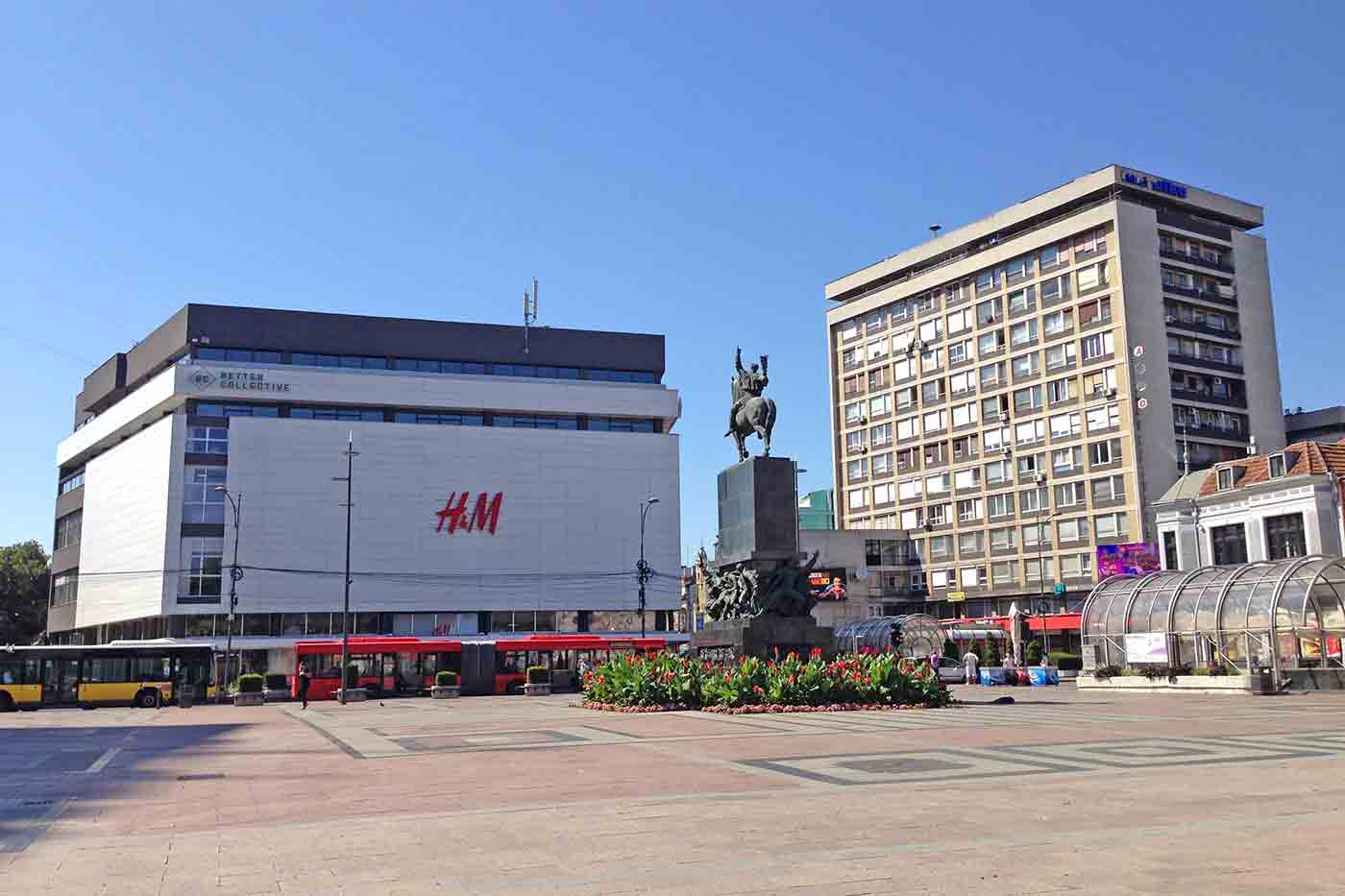
11. Niška Banja / Niš Spa
This park is the city’s spa and has natural springs. The history of civilization at this site goes back to the Neolithic age. The springs are also believed to have medicinal properties. People still visit Niš Serbia to dip their feet or bathe at Niska Banja. You would need about an hour to experience this place.
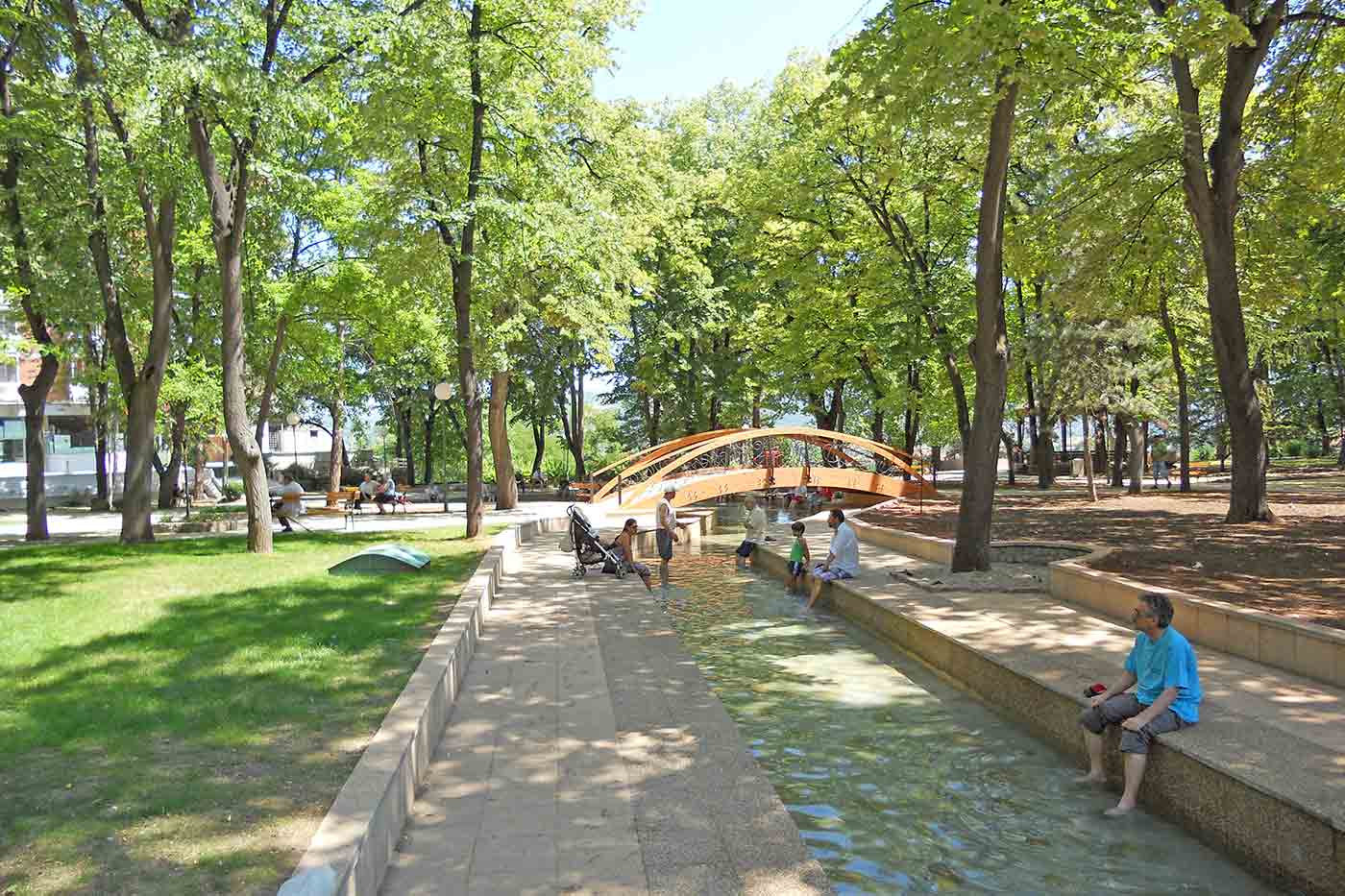
12. Jelasnica Gorge
This gorge stretches for 2 km. The walls of dolomite are among the most popular natural places to visit in Niš Serbia. It is also a great place for hiking, picnic and camping. You would need 2 to 3 hours to explore this place.
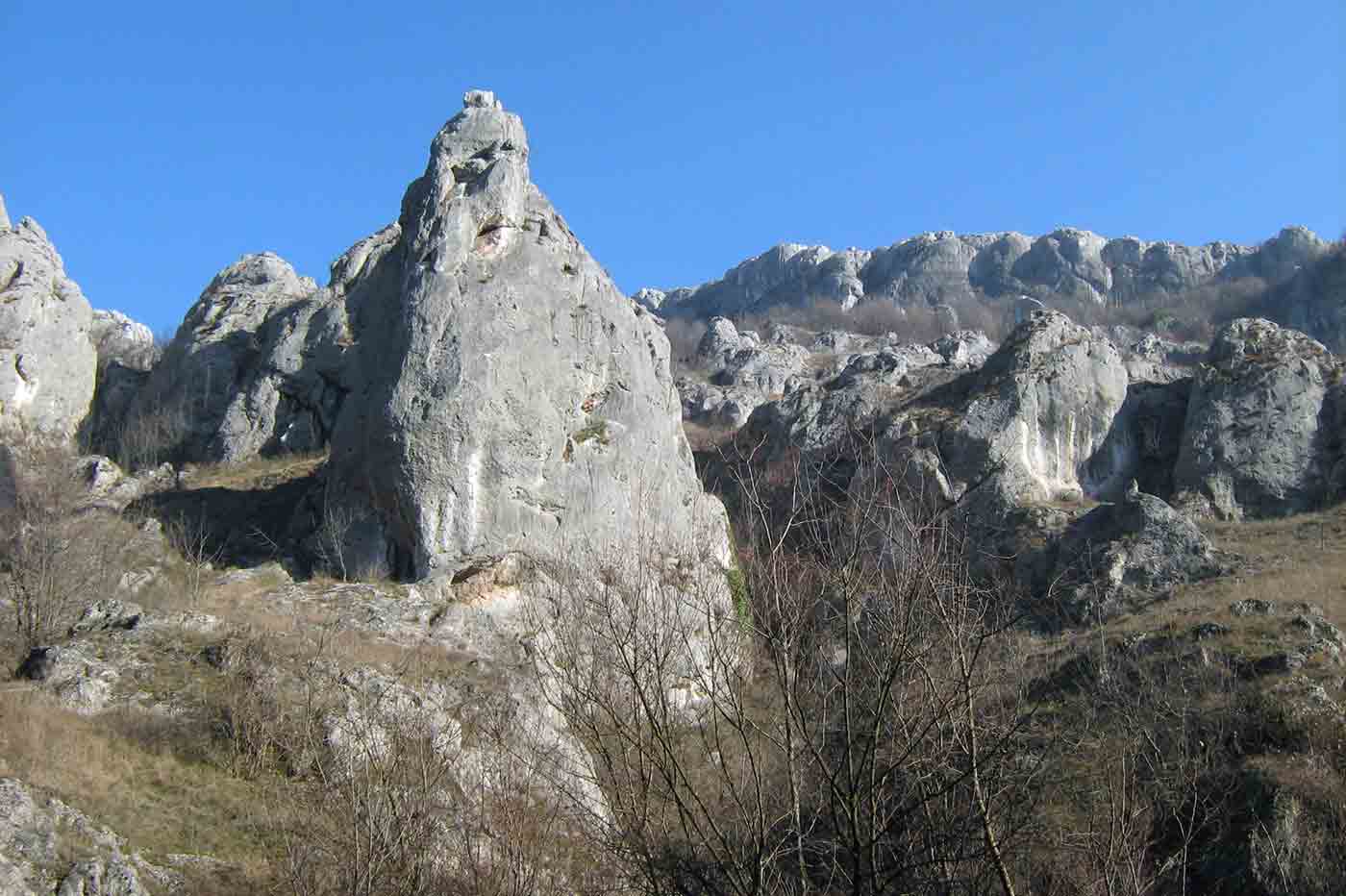
13. Serbian Wartime Parliament Building / Niš Declaration
This building came into being in 1890 and was originally built as a restaurant. During the course of its history, this building has been used as a military mess, an officer’s home and a parliament house. You will need about half an hour to tour this place during Niš travel.
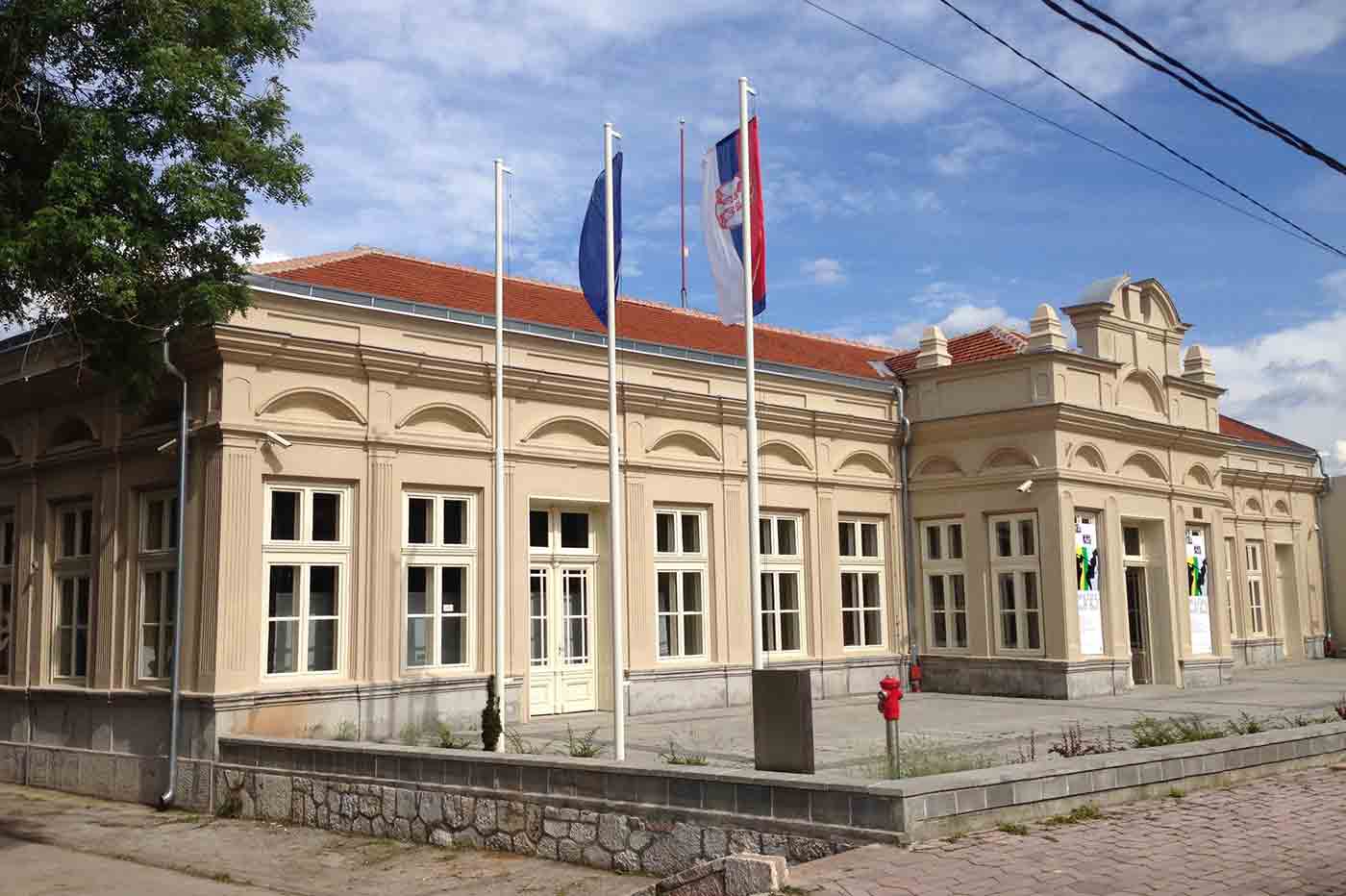
14. Mausoleum of Count Alexie Kirillovich Vronsky
Also known as Holy Trinity Church of Gornji Adrovac, this church was built to commemorate the Count Rayevsky, who was immortalized as Count Vronsky in Leo Tolstoy’s Anna Karenina. You will need about 30 minutes from Niš sightseeing for this church.
15. Villa of Prince George
Prince George was heir to the throne of Serbia in 1926. He was declared insane by his younger brother Alexander, who then took the throne. Prince George was contained in this villa. His family was eliminated by the communist regime, but he was spared and was moved out to Belgrade. It is not very well known among Niš attractions but is an important part of the city’s history. You will need about an hour to tour this villa.
16. Bali Bey Mosque
This mosque was built in 1521 and was one of the 4 mosques in the fortress. Three of them were destroyed and this is the only one of its kind remaining in the city. It is one of the most important historical things to see in Niš Serbia and will require about an hour’s time.
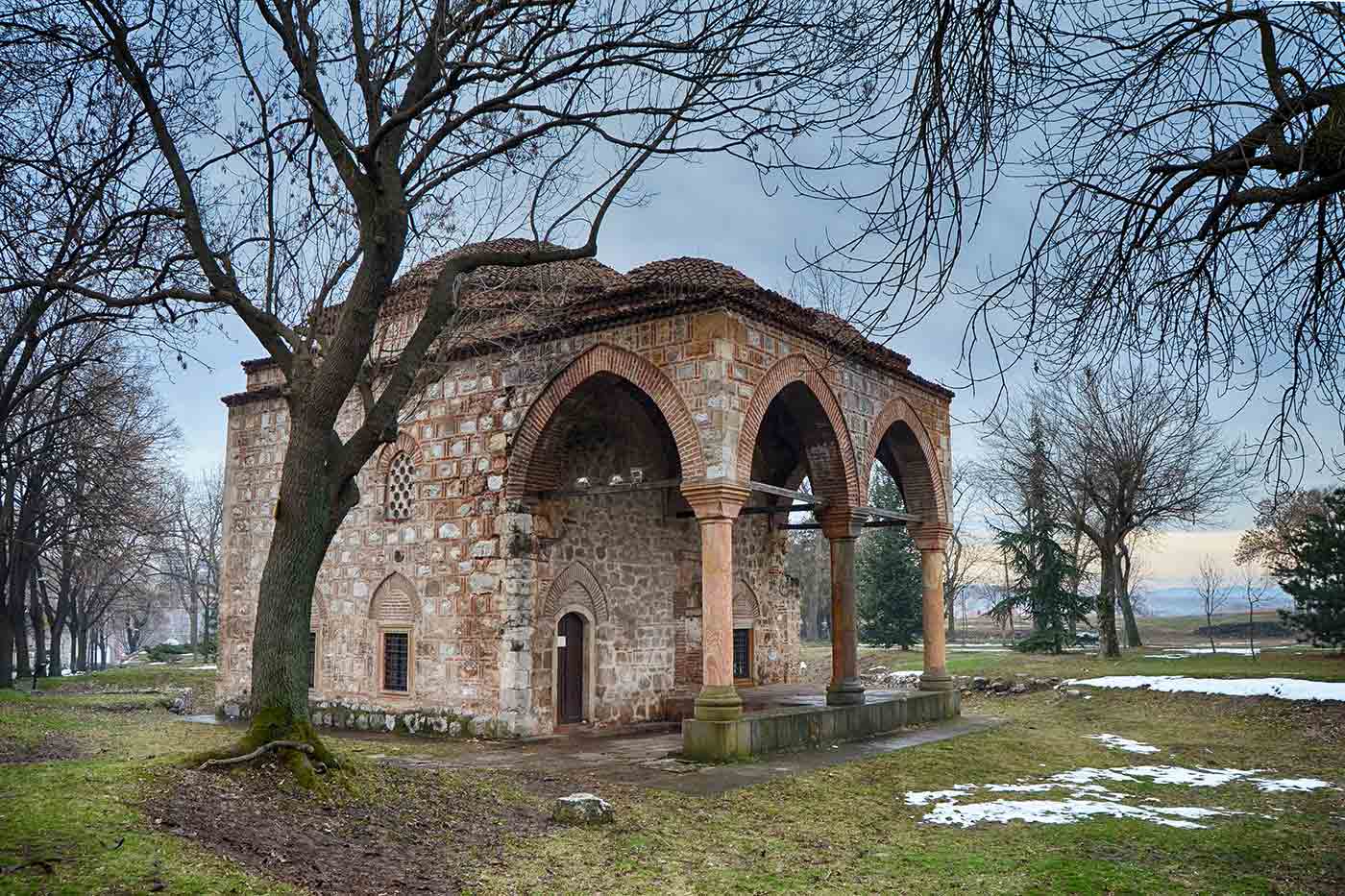
If you are still wondering what to see in Niš Serbia, check out the sections below. We have put together an exhaustive list of places and activities you can explore in and around the city.
Best things to do in nis, monuments, museums & historical places to visit in nis.
- Niš Fortress
- Skull Tower
- Park Bubanj
- Mediana Archeological Site
- Latin Church of Gornji Matejavec
- Serbian Wartime Parliament Building
- Red Cross Nazi Concentration Camp
- Cegar Monument
- Bali Bey Mosque
- Mausoleum of Count Vronsky
- National Museum of Niš
- Prince George Villa
- Monument to the Liberators of Niš
- Holy Trinity Cathedral
- Stevan Sremac and Kalca Monument
- St. Sava Church
- Octagon Palace
- Rusalia Chuch
- Jovana Krstitelja Monastery
- Islam Aga Mosque
- Beogradska Kapija
- Church of Saint Panteleimon
- Oslobodiocima Monument
Nature & Wildlife Tourist Spots in Nis
- Mount Kalafat
- Kamenicki Vis Hill
- Mount Korvn Grad
- The Big Black Rock
- Selicevica Mountain
- Jelasnica Gorge
Entertainment & Leisure Tourist Spots in Nis
- Vinski Podrum Malca
- Niska Banja
- City Garden
- Cair Aquapark
Shopping in Nis
- Forum Shopping Center
- Stop Shop Retail Park
- Exclusive Shopping Center
- Panda Shopping Center
- Delta Planet Mall
Offbeat Places, Tours, & Adventure in Nis
- Walking Tour
- Paragliding
- Bicycle Tour
Sightseeing in Nis
- Tinkers Alley
- King Milan Square
- Stambol Gate
Food, Dining, Restaurants, & Street Food in Nis
- Kafana Meze
- Stambolijski
- Pleasure Caffe
- Stara Serbia
- Go Go Picerija
- Brann Bakery
- Nislijska Mehana
Where to Stay in Niš?
Here we have listed Top Rated Hotels in Niš. You can check below listed hotels for your perfect stay in Niš.
- Hotel Crystal Light
- Hostel Bloom Inn
- ArtLoft Hotel
- Ambasador Hotel Nis
- Garni Hotel Consul Accommodation
- Hotel Tami Residence
- My Place Hotel
- New City Hotel & Restaurant Nis
- Only One Apartments & Suites
- Nis City Center Apartments
- Hotel Lotos
- Hotel Panorama Lux
- Guest Accomodation Majesty
- Vivaldi Suites
- Hotel Aleksandar
- Hostel Day ‘n’ Night
Custom Tours Package in Niš
How to reach nis.
The fastest option for Nis travel is the Constantine the Great Airport. You can get direct flights from Belgrade , Cologne , Hahn, Istanbul , Milan , Zurich , Munich , Berlin , Malmo, Bratislava , Dusseldorf , Ljubljana , Athens , Tivat, Antalya , Malta, Stockholm , Vienna , Dortmund and few more cities in Europe. The airport is connected to places to visit in Niš Serbia by buses and cabs.
Other airports you can consider to reach Niš include Nikola Tesla Airport in Belgrade, Sofia Airport and Prishtina Airport.
You can get direct trains to visit Niš from Thessaloniki, Ljubljana, Skopje, Belgrade, Zagreb , Istanbul, Vienna, Sofia , Bar and Budapest . There are also several one-stop railway routes which connect Niš to several European cities.
The bus network is quite well spread out in Serbia. You can get direct and connecting buses from several cities and towns in the country to reach Niš. There are a few international buses connecting Niš to Greece, Macedonia, Bulgaria and Romania.
If you are planning to get to reach Nis by road, you should head for route E75, A4, A1 or E80.
There are no direct water routes to visit Nis.
Image Reference
- Nis Fortress – MrPanyGoff / Wikimedia Commons
- Skull Tower – amanderson2 / Flickr
- Mediana Archaeological Site – amanderson2 / Flickr
- National Museum of Nis – Miljan Simonović / Wikimedia Commons
- Tinkers Alley / Coppersmith Alley – Bojan Lazarevic, ZivojinMisic slike / Wikimedia Commons
- Crveni Krst Concentration Camp – Mickey Mystique / Wikimedia Commons
- Bubanj Memorial Park – Tiia Monto / Wikimedia Commons
- Latin Church of Gornji Matejevac – Jsphotomorgana / Wikimedia Commons
- Holy Trinity Cathedral – CrniBombarder!!! / Wikimedia Commons
- King Milan Square – Intermedichbo – Dr Milorad Dimić, Serbia / Wikimedia Commons
- Niška Banja / Niš Spa – Intermedichbo / Wikimedia Commons
- Jelasnica Gorge – Marjan Kustera / Flickr
- Serbian Wartime Parliament Building / Niš Declaration – Intermedichbo (dr Milorad Dimić) / Wikimedia Commons
- Mausoleum of Count Alexei Kirillovich Vronsky –
- Villa of Prince George –
- Bali Bey Mosque – Jim Black / PixaBay
- 20 Worth Visiting Attractions and Things to Do in Alexandria for Tourist
- 21 Wonderful Places to Visit and Things to Do in Wellington, New Zealand
Mustafa Natalwala
Mustafa is a content writer and digital marketing expert at WideWorldTrips.com His mainly interests are into travelling, photography, film-making
You May Also Like
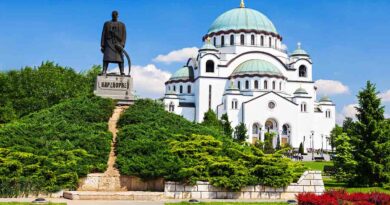
Best Things to Do and Must See Attractions in Belgrade, Serbia
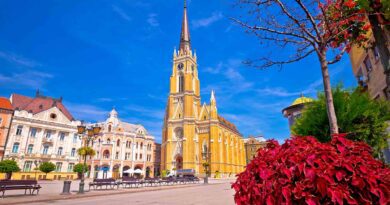
Explore The Top Tourist Attractions and Things to Do in Novi Sad
Leave a reply cancel reply.
Your email address will not be published. Required fields are marked *
Save my name, email, and website in this browser for the next time I comment.

A Guide to Niš: Visiting the Fortress, Skull Tower & More
Last Updated on: 21st February 2023, 11:29 pm
Niš may be Serbia’s third-largest city, but it’s a place where few tourists venture. Historically, it’s best known as the birthplace of Constantine the Great (280-337 AD). And today, many of the city’s monuments are reminders of the region’s dark past, from the chilling Ottoman Skull Tower to a Nazi concentration camp. In the following Niš guide, we’ll be covering it all.
Niš contains several main attractions, three of which can be visited with a combo ticket that only costs around 300 RSD. Simply ask about it at one of the ticket booths. The popular Niš fortress, meanwhile, is completely free to enter.
Also be sure to check the very end of this Niš guide for tips on transportation and where to stay.
Niš Fortress
Like many fortresses in the region, Niš Fortress dates back at least as far as Roman times. But the surviving walls we see today were established in the 18th century during Ottoman rule.
Most visitors will enter via the main Stambol Gate – one of four originals – which linked the fortress with Istanbul in Ottoman times.

If you’ve been to Belgrade Fortress , the visiting experiences are quite similar. Niš Fortress is also free to enter and it serves as an important public space where locals gather and relax daily.
You’ll also encounter numerous historical landmarks throughout the area which span nearly 2,000 years.

Nearby the entrance is a Turkish hammam which dates to the 15th century.
Also nearby is a monument dedicated to Milan Obrenović who ruled as prince of Serbia from 1868-82. Part of the prominent Obrenović dynasty, he helped liberate Niš from the Ottomans in the late 1800s.
Moving on, you’ll find the remains of a Byzantine street established in the 5th century. While only foundations remain, the ruins of multiple buildings were uncovered during 1960s excavations.

Another one of Niš Fortress’s top highlights is the Bali-beg Mosque, located near the fortress’s center. The only surviving mosque of ten originals, it was built some time in the 16th century.
Not far away are the remains of an old vaulted building from the Roman period. While largely submerged underground today, it was likely one of the fortress’s visual highlights in its time.

Also nearby is a collection of artifacts discovered throughout the fortress. On display since 1887, the collection contains over 40 pieces, most of them tombstones and sculptures.

Elsewhere around the fortress, meanwhile, are several Ottoman-era powder magazines.
And while rather incongruous with the rest of the site, jazz lovers will be delighted to find multiple murals of famous musicians painted along some of the dilapidated buildings.
The fortress, in fact, hosts the cleverly titled Nišville Jazz Festival every August.

All in all, Niš Fortress is vast. And with plenty of places to sit and relax, including cafes and restaurants, you could easily spend half a day here during nice weather.
While cold and gloomy during my visit, I still enjoyed my walk around, and I managed to see all the major landmarks in a couple of hours.
The Skull Tower
One of the most chilling landmarks of the Balkans, Niš’s Skull Tower is a harrowing reminder of how the Ottomans treated those who dared to defy their rule.
The tower’s backstory involves the First Serbian Uprising of the early 19th century that was led by national hero Karađorđe . The rebels were quite successful at first, capturing numerous territories – including Belgrade – from Ottoman hands.

But Niš, among other regions, had yet to be liberated. And so the rebel leaders decided to direct their attention there. In 1809, around 16,000 men arrived in the area to get the job done.
But the Battle of Čegar saw the rebels greatly outnumbered. Realizing that the situation was hopeless, rebel leader Stevan Sinđelić charged at the Turks, firing at their powder magazine.

The huge explosion caused large numbers of casualties on both sides, with an estimated 4,000 Serbs and 10,000 Turks dying in the blast.
Despite suffering tremendous losses, the Turks prevailed and managed to hold onto Niš for several more decades.
And in retaliation for the uprising, Ottoman vizier Hurshid Pasha (who, interestingly enough, was of Georgian descent) ordered his men to decapitate and scalp as many Serbs as they could.

As many as 952 skulls were integrated into this dreadful tower, which once stood at 4.5 m high. Known locally as Ćele Kula, the Ottomans constructed it as a way to dissuade future rebellions.
But according to the Serbs, the tower only further bolstered national pride. That’s why after the last Ottoman governor of the region ordered the tower dismantled in 1861, locals tried to preserve what was left.

Today, the tower is enclosed within a small chapel that was erected in 1894. And while only 58 of the original skulls remain, it’s still regarded as one of the country’s most significant cultural and historical monuments. And it’s easily the most unique attraction in this Niš guide.

The Red Cross Concentration Camp
When most people think of World War II-era concentration camps, Serbia isn’t one of the first countries that comes to mind. But Niš, in fact, is home to what’s considered to be one of Europe’s best-preserved camps.
The Germans occupied Serbia from 1941-45 and kept as many as 30,000 prisoners here – among them Serbian resistance fighters and members of the local Jewish population.

Interestingly, what now serves as the ticket booth was once the guard tower, and both a swastika and SS symbol can still be made out above the entrance.

The camp’s largest building is now home to a very comprehensive museum detailing its history, especially the large escape that took place here on 12 February, 1942.
As more and more executions began taking place at nearby at Bubanj, about three kilometers outside the city, the prisoners felt they had nothing to lose.
Attacking the German guards during their usual walk, they attempted their escape, but the other guards and nearby military base were quickly alerted.

The prisoners then headed right for the barbed wire fences, and 105 of them managed to escape. Forty-two of them died right then and there, however.
As the first major escape to take place at a Nazi concentration camp, the news quickly spread throughout Europe.
And in an action that echoed the Ottoman retaliation the century prior (see above), the Germans staged a massive execution at Bubanj just days later. In total, around 800 prisoners were executed in response to the escape.
The museum also details how, over the years, many of the prisoners here would later be sent to other concentration camps in places like Norway, Austria, Poland and Greece. The exhibition also goes into detail about the awful conditions at each.

For those interested, Bubanj itself is now a tourist attraction in Niš. It’s home to a large public park and an iconic spomenik (Yugoslav monument) in the shape of three massive fists that was built to commemorate the massacres.
Interestingly, the area also happened to be home to an early Bronze Age settlement.
While I’d planned to visit during my stay, bad weather thwarted my plans. From central Niš, Bubanj is about 50 minutes away on foot. Or, if you can figure out the public bus system, that would surely be a more convenient option.
The Archaeological Hall
Despite its grandiose exterior, Niš’s archaeological museum only takes up a single room of the building – hence why it’s simply called the Archaeological Hall.
But given Niš’s historical importance, the small collection is well worth going to see.

It largely focuses on the Roman era, complete with a model of what the original Mediana palace might’ve looked like.
Mediana was the luxurious villa built by Constantine the Great at his place of birth. Unfortunately, it’s been closed for years, and I was disappointed to find it still closed during my visit (according to the staff at the Skull Tower, nothing can be seen from the outside, either).
Visiting the Archaeological Hall, then, is the next best thing. In addition to a scale model of the villa, you’ll also find numerous sculptures and artifacts uncovered there.

Despite Constantine being the first Christian emperor, some pagan sculptures were unearthed at Mediana, including the Greek healing gods of Asclepius and Hygeia as well as the Roman goddess Venus.
Other statues, meanwhile, represent members of Constantine’s family.

Displays from the Middle Ages include numerous replicas of medieval tombs that were oftentimes discovered on the properties of ordinary Niš residents!
Other artifacts presented here come from other towns in the general region, including a bust of a Byzantine empress.

Before leaving, be sure not to miss the collection of Roman-era altars set up in front of the ticket booth.
As for tickets, the Archaeological Hall can be accessed with the same combo ticket (300 RSD) that also includes access to the other attractions in this Niš guide, such as the Skull Tower and concentration camp.
Additional Info
Yes, Niš is an interesting city with enough notable attractions to warrant a short visit. As it’s too far from Belgrade for a day trip, you’ll want to spend at least a night or two in town.
With that in mind, if you only have limited time in Serbia, you’ll probably want to make time for the northern Vojvodina region instead of the south.
If you’re particularly interested in Roman history, however, visiting the fascinating ruins of Felix Romuliana can be done as a day trip from Niš . And when it opens up, Mediana can be seen on the outskirts of town as well.
A few buses for Niš leave from Belgrade every hour. The ride generally lasts about three hours and fifteen minutes. You can check the website polazak.com for updated timetables. There’s little need to purchase tickets in advance.
From the bus terminal, it only takes about 15 minutes or so to walk to the center of town.
Niš is also home to the Constantine the Great International Airport with direct flights to various European and Turkish destinations. Many of the routes only operate in summer, however.
If you’d like to visit the locations featured above but with additional insight from a local guide, this popular day tour has dozens of good reviews. It will also take you to a few additional sites and you won’t have to worry about dealing with transport. The tour starts and ends in Niš.
While Niš isn’t really accessible as a day trip from Belgrade, it is indeed doable if you take a private tour. This tour takes you to the city’s top sites along with Devil’s Town, a nearby geological oddity that I hoped to visit but didn’t have time for.
I stayed at a place called Apartmani Pinokio which was within walking distance of the fortress and most of the other locations in the Niš guide above.
I had my own room with a private bathroom and only paid around €12 per night including tax. As there’s no front desk, you’ll have to call someone to check in.
While the room has an air conditioner, there was no remote control to be found during my stay. I wanted to use it as a heater during an abnormally cold autumn week, but bundling up in the blankets worked well enough.
All in all, I’d recommend Apartmani Pinokio . But Niš is small enough that you should easily be able to find a conveniently located place. Checking on Airbnb, Niš also has some great values for monthly rentals. Booking.com
- Trip Planner
- Private Tours
- Small Group Tours
- Two Capitals
- City Breaks
- Trans-Siberian
- River Cruises
- Russia & Beyond
4-star edition of the private 9-day tour of the Russian capitals
5-star edition fo the private 9-day tour of Moscow & St. Petersburg
13-day in-depth discovery of Moscow, Kazan, and St. Petersburg
7-day tour designed to harness the best of the Venice of the North
11-day private discovery of Moscow, St. Petersburg, and the Golden Ring
Your Russia Getaway
Fill out the short trip survey to receive a personalized itinerary from a destination expert.
- Travel guide
- Before you go
- What to see
Russia Trip Planner
Learn about the dos and the don'ts for your amazing trip to Russia
- Our Partners
- Reservation Policies
Rated 9/10 on the Trustpilot review platform
- My itineraries
- Chat with us
- Trip survey
Groups & Agents
- For Suppliers
+1 (888) 744-6056
- North America : +1 (888) 744-6056
- Oceania and Australia : +61261888118
Khabarovsk, Russia
You are here, about khabarovsk.
Khabarovsk is one of the most significant and beautiful cities of Russia's Far East. It stands on the right bank of the Amur River along the scenic Trans-Siberian railway and almost touches the Chinese border.
The city of Khabarovsk played a crucial role in East - Russian history and is famous for its historic sights, monuments of architecture of different eras, religious buildings, lovely parks, gardens, and artificial lakes which surprise its visitors with impressive fountain shows.
Khabarovsk History
Founded in 1858, the city is now loved by Chinese travelers and those who are going on iconic train journeys along the world's longest railway from Siberia. After days of relentless taiga, people reach this vibrant city with multiple attractions, plenty of historical sights from the tsarist-era, and a number of places to try traditional Russian cuisine. Khabarovsk is indeed a charming city that deserved to be on your travel itinerary. Especially, if you are the legendary Trans-Siberian is on your travel radar.
We suggest beginning your Khabarovsk tour from the famous monument erected in honor of Nikolay Muravyov - Amursky, one of the best-known explorer of East Siberia, a general, and the founder of the city.
Continue your Khabarovsk trip with a riverside walk along the picturesque Nevelsky Embankment and pass through the third tallest church (35 feet) in all Russia - Spaso-Transfiguration Cathedral standing on top of a hill. Take in the spectacular location and view of this Cathedral and its classic golden domes, dominating the city skyline and being visible from a large distance.
Your Trans-Siberian itinerary would become even better if you include a visit to the famous Khabarovsk Bridge as well. The railway bridge goes over the Amur River and is considered to be the longest bridge on the Trans-Siberian route.
Best Things to Do in Khabarovsk
- Stop by the Nikolay Muravyov - Amursky monument
- Visit the gorgeous Spaso-Transfiguration Cathedral
- Take a picture by the renown Khabarovsk Bridge over the Amur River
Top Attractions in Khabarovsk

The Kamchatka peninsula is perhaps one of the most beautiful locations in the world. With about 300 volcanoes, 29 of which are still active, the mountains dazzle visitors.
All Attractions in Khabarovsk
More about khabarovsk.
- Call us now
- Request a call
- Chat on WhatsApp
- Start Live chat
- Contact via email

Moscow & St. Petersburg Small Group Tours Private Tour Packages Trans-Siberian Trips Russian River Cruises Moscow Tour Packages St. Petersburg Tours All Russia Tours
Why Travel to Russia Best Time to Visit Russia Russian Visa Information Tips Before Traveling Tips on Arrival Russian Currency Moscow Travel Guide Read More in Our Blog
Hermitage Museum Church of the Savior on Blood The Kremlin Sergiev Posad, Golden Ring Kizhi Island The Red Square Siberia Lake Baikal
Fla. Seller of Travel Ref. No. ST39939 All Rights Reserved © 2024 About Us | Testimonials | Our Blog | Terms of Service | Privacy Policy
Expedia Rewards is now One Key™
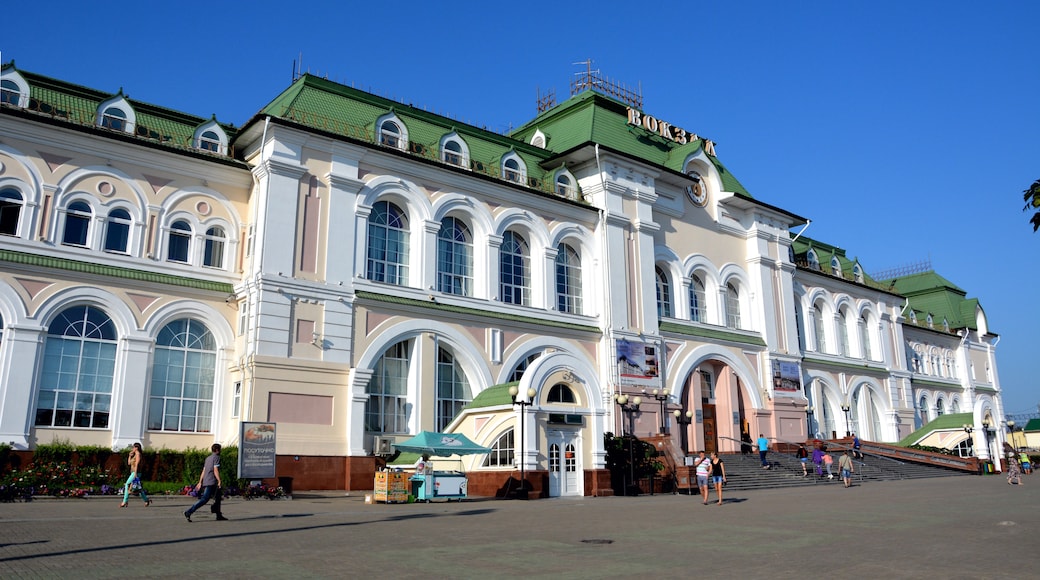
Visit Khabarovsk
Check khabarovsk hotel availability, popular places to visit.
- Transfiguration Cathedral
Find out about the history of Khabarovsk when you take a trip to Transfiguration Cathedral. Experience the area's theater scene and museums.
- World War II Memorial
Find out about the history of Khabarovsk with a stop at World War II Memorial. Experience the area's theater scene and museums.
- Far East Museum of Fine Arts
You can make plans for a show at Far East Museum of Fine Arts during your trip to Khabarovsk. Experience the area's theater scene and museums.
- Lenin Square
You can find out about the history of Khabarovsk with a trip to Lenin Square. Experience the area's theater scene and museums.
- Khabarovsk Krai Drama Theater
You can get tickets for a performance at Khabarovsk Krai Drama Theater on your trip to Khabarovsk. Experience the area's theater scene and museums.
- Khabarovsk Krai Musical Theater
You can enjoy a show at Khabarovsk Krai Musical Theater during your trip to Khabarovsk. Experience the area's theater scene and museums.
Reviews of Khabarovsk
- Cities near Khabarovsk
- Places of interest
- Okladnikov Archaeology Museum
- Khabarovsk Regional Museum
- Komsomolskaya Square
- Lenin Stadium
- Muravyov Amursky Park
- Khabarovsk City Ponds
- Bolshaya Medveditsa Shopping Center
- Khabarovsk Geological Museum
- Khabarovsk Pantomime Theatre
- Vedogon Theatre
- Fedotov Art Gallery
- Svobodny Free Theater
- Far Eastern Art Museum
- Triada Theater

- Visit Our Blog about Russia to know more about Russian sights, history
- Check out our Russian cities and regions guides
- Follow us on Twitter and Facebook to better understand Russia
- Info about getting Russian visa , the main airports , how to rent an apartment
- Our Expert answers your questions about Russia, some tips about sending flowers

Russian regions
- Amur oblast
- Buryat republic
- Chukotka okrug
- Jewish autonomous oblast
- Kamchatka krai
- Khabarovsk krai
- Komsomolsk-on-Amur
- Magadan oblast
- Primorye krai
- Sakha republic
- Sakhalin oblast
- Zabaikalsky krai
- Map of Russia
- All cities and regions
- Blog about Russia
- News from Russia
- How to get a visa
- Flights to Russia
- Russian hotels
- Renting apartments
- Russian currency
- FIFA World Cup 2018
- Submit an article
- Flowers to Russia
- Ask our Expert
Khabarovsk city, Russia
The capital city of Khabarovsk krai .
Khabarovsk - Overview
Khabarovsk , the administrative center of Khabarovsk Krai, is one of the largest industrial, transport, cultural, educational, and scientific centers of the Far East of Russia. This city is located at the intersection of international railway and air transport routes on the right bank of the Amur River, near the border with China.
The population of Khabarovsk is about 613,500 (2022), the area - 383 sq. km.
The phone code - +7 4212, the postal codes - 680000-680150.
Khabarovsk city flag
Khabarovsk city coat of arms.
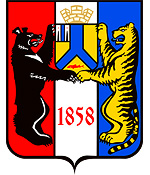
Khabarovsk city map, Russia
Khabarovsk city latest news and posts from our blog:.
25 August, 2017 / Russian banknotes and the sights depicted on them .
1 August, 2017 / Khabarovsk - the view from above .
21 December, 2016 / Flying over diverse Russia .
21 April, 2013 / Khabarovsk - the center of the Russian Far East .
16 January, 2011 / Siberian tiger walking the highway .
More posts..
History of Khabarovsk
Foundation of khabarovsk.
Until the mid-19th century, the territory of present-day Khabarovsk, in accordance with the Nerchinsk Treaty, was located on a neutral territory, not delimited between the Qing Empire (China) and the Russian Empire. In 1858, the Aigun Treaty was signed, according to which the entire left bank of the Amur River passed into the possession of the Russian Empire, the right bank of the Amur to the Ussuri River became part of China.
After signing the treaty, the 13th Siberian Line Battalion was sent to establish settlements along the Amur. One of the new settlements was named Khabarovka - in honor of Yerofey Khabarov, a 17th-century Russian explorer known for his attempts to colonize this region for Russia. In 1864, the first plan for the development of the future town was made. By 1865, there were 1,294 residents in Khabarovka - mostly soldiers and officers.
Initially, only military buildings were constructed in Khabarovka. Five years after the foundation, there were already 167 buildings in the settlement including the house of the commander, barracks, warehouses, residential buildings, and trading shops. Due to its very convenient location at the confluence of the Amur and Ussuri rivers, Khabarovka began to develop very quickly.
Following the military settlers, civilians began to arrive from all parts of the Russian Empire including Moscow and St. Petersburg. At that time, their main occupations were hunting, fur trade, and fishing. The settlers were provided with free fertile land, which also contributed to the influx of new residents to Khabarovka.
More historical facts…
Khabarovsk - a regional center of the Russian Far East
In 1873, the first elementary school was opened in Khabarovka. The Russo-Chinese treaty of 1881 allowed duty-free trade in the 50-kilometer land border zone and the goods of Chinese and English manufacturers could be bought half cheaper here.
By 1880, Khabarovka was already a rather large settlement of Primorsky Oblast with a population of 2,036 people (47.3% - military, 23% - bourgeois, 21.3% - foreigners (mainly Chinese workers), 1.4% - representatives of the indigenous population, and 7% - officers, clergy, merchants, industrialists).
At that time, the capital of Primorsky Oblast was Nikolayevsk (today’s Nikolayevsk-on-Amur), but Khabarovka had a more advantageous geographical position, as it was located at the crossroads of all communication lines from Vladivostok and the coast. In 1880, Khabarovka became the center of Primorsky Oblast and transformed into a town. In 1893, the town was renamed Khabarovsk.
In 1894, the Amur (Khabarovsk) department of the Russian Geographical Society was created with a museum (the Khabarovsk Regional Museum of Local Lore) and a library. In 1895, the first vocational technical school was opened - the railway school of the Ministry of Railways. During these years, a lot of stone houses were built in Khabarovsk. Most of them are preserved in the city to this day.
In 1897, the first train departed from the Khabarovsk railway station. The Ussuri Railway connected Khabarovsk with Vladivostok. The population of the town was about 14,900 people.
Khabarovsk in the 20th century and beyond
In 1916, the construction of a railway bridge over the Amur was completed and Khabarovsk was connected by the Amur Railway with Eastern Siberia.
November 14, 1922, after the liquidation of the Far Eastern Republic, Khabarovsk became part of the Russian Soviet Federative Socialist Republic. On December 6, 1923, the administrative center of the Russian Far East was transferred to Khabarovsk from Chita. In 1925, the railway bridge over the Amur was restored.
On January 4, 1926, Far Eastern Krai was formed with its center in Khabarovsk. The population of the city was about 52 thousand people. On October 23, 1934, the Far Eastern Agricultural Research Institute was established in Khabarovsk. In 1936, Khabarovsk was connected by rail with Komsomolsk-on-Amur.
By 1939, the population of Khabarovsk increased to 200 thousand people. From June 1940, the command of the Far Eastern Front was deployed in Khabarovsk. From August 1945, the headquarters of the High Command of Soviet Forces in the Far East and the command of the 1st Far Eastern Front were stationed in the city.
On March 16, 1946, the Khabarovsk Drama Theater was created. In 1949, a trial was held in Khabarovsk in the case of former members of the Japanese Kwantung Army. The most significant changes in the city occurred in the post-war decades.
In 1960, the Khabarovsk television studio began broadcasting. On October 24, 1964, the Khabarovsk Shipyard produced the first “Rocket”, a famous Soviet hydrofoil ship. On September 1, 1967, the Khabarovsk Institute of Physical Education (the Far Eastern State Academy of Physical Culture) was opened. On September 1, 1968, the Khabarovsk State Institute of Arts and Culture was opened.
In 1975, the population of Khabarovsk was about 502,000 people. By 1990, Khabarovsk was formed as a multifunctional economic center of national importance. The population reached its maximum of 616 thousand people.
In May 2000, federal districts were formed in the Russian Federation. Khabarovsk became the center of the Far Eastern Federal District. In 2008, the railway station was completely renovated. In 2009, the reconstruction of the bridge across the Amur was finished. In late summer - early fall of 2013, Khabarovsk was affected by flooding, which became the strongest over the entire observation period since 1897.
On December 13, 2018, the center of the Far Eastern Federal District was moved from Khabarovsk to Vladivostok.
Pictures of Khabarovsk
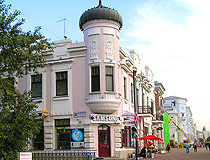
Pre-revolutionary architecture in Khabarovsk
Author: Tanya Yakushina
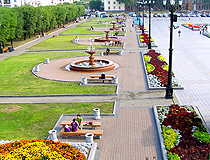
Lenin Square in Khabarovsk
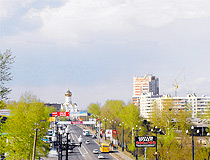
Khabarovsk cityscape
Author: Santiago Rios
Khabarovsk - Features
Khabarovsk is often considered the capital of the Russian Far East. The city is located in Asia, in the southern part of the Central Amur Lowland, near the confluence of the Amur and Ussuri rivers, about 17 km from the border with China. The city stands on the elevated right bank of the Amur River, the relief of which is diverse and complex.
The distance from Moscow to Khabarovsk by roads is about 8,250 km, to Vladivostok - 750 km. About half of the population of Khabarovsk Krai lives in this city. Khabarovsk is a bit similar to the large cities of the Volga region. Here you can see similar new buildings wedging chaotically into the cityscape and an abundance of pre-revolutionary architecture.
Although Khabarovsk can’t boast of Vladivostok’s seaside flavor or all-Russian sights, it’s still worth coming here, and to some extent this is inevitable: all routes of the Khabarovsk region converge here.
The climate in Khabarovsk is temperate monsoon, with snowy cold winters and hot humid summers. The average temperature in January is minus 20.5 degrees Celsius, in July - plus 21.8 degrees Celsius. The number of sunny days per year is significantly higher than in a number of large cities of Russia (up to 300 days a year; in Moscow and St. Petersburg - about 100).
From November to March, very dry and frosty continental air with clear and sunny weather is established over the city. The best time to visit Khabarovsk is June and September when the weather is not too hot.
Khabarovsk is a major hub at the junction of water, air, rail, and road communications from the north and west of the country, Primorye, Sakhalin, and the ports of Khabarovsk Krai. The Trans-Siberian Railway passes through the city, as well as the railway line to Komsomolsk-on-Amur. This city is the connecting point of the federal highways “Amur” (Chita - Khabarovsk), “Ussuri” (Khabarovsk - Vladivostok), and Khabarovsk - Komsomolsk-on-Amur. Urban transport includes trams, trolleybuses, buses, minibuses, and taxis.
The international airport “Novy” offers regular flights to Moscow, Yekaterinburg, Vladivostok, Yakutsk, Novosibirsk, Irkutsk, Magadan, Petropavlovsk-Kamchatsky, Yuzhno-Sakhalinsk, Seoul (South Korea), Tokyo (Japan).
The design of the Russian 5,000 rubles banknote features Khabarovsk. On its front side you can see the monument to Muravyov-Amursky (the founder of Khabarovsk and Vladivostok) on the background of the embankment of the Amur River. The Khabarovsk bridge over the Amur is depicted on the back of the banknote. At the time of construction, in 1916, it was one of the longest bridges in the world and was called “The Amur Miracle”.
The fork-shaped cross depicted on the coat of arms of Khabarovsk symbolizes the location of the city at the confluence of the Amur and Ussuri rivers. Fish reminds of the main occupation of the first residents - fishing. The white-breasted bear and the Amur tiger are endemic to the Amur land.
Main Attractions of Khabarovsk
Khabarovsk Regional Museum named after Nikolai Grodekov . The expositions of this museum feature exhibits on the paleontology and geology of the Amur Region, the flora and fauna of the Far East, the fish of the Amur basin, the culture of the indigenous peoples of the Amur region and Russian settlers, the history of the development of the Russian Far East, the events of the Civil War in the Far East (1917-1922). The museum building (1896) is a monument of architecture, culture, and history of federal significance. Shevchenko Street, 11.
Amur (Khabarovsk) Cliff - the most beautiful place in the city located in the center of Admiral Gennady Nevelsky Embankment running along the Amur River bank, near the Khabarovsk Regional Museum. In 1858, a military detachment led by commander Yakov Dyachenko landed here. He decided to set up his camp here, which later became a military settlement, and even later - the village of Khabarovka.
Here you can find a good observation deck with beautiful views of the Amur River and the city. Nearby, there is a park with the famous monument to the Governor-General of Eastern Siberia Muravyov-Amursky. This monument is depicted on the Russian banknote of 5,000 rubles. Shevchenko Street, 15.
The Far Eastern Art Museum - the largest museum of fine art in the Russian Far East. The collection of this museum has about 16 thousand works of art of the Old Russian, Russian pre-revolutionary, Soviet, and modern periods. Here you can also see the Far Eastern and Western European fine art, the art of the peoples of the Amur Region, works of Russian icon painting of the 15th-20th centuries. Shevchenko Street, 7.
Military History Museum of the Far Eastern Military District . The museum exhibits documents, photographs, banners of all periods of the history of the Far Eastern Military District, starting with the Russian Civil War in the Far East and to our time. In the courtyard, there is an exhibition of military equipment. Shevchenko Street, 20.
Khabarovsk Assumption Cathedral - the first stone building and one of the largest churches in Khabarovsk. The original building was demolished in 1930. In 2002, the cathedral was restored according to a new architectural project in the Russian style with some eclectic features. The new cathedral as a whole differs from the original building, but has some of its elements. In particular, the shapes of the arches and domes of the new cathedral were taken from the old version. Sobornaya (Komsomolskaya) Square.
Khabarovsk Bridge (“The Amur Miracle”) - one of the main symbols of Khabarovsk. The construction of this bridge completed the Trans-Siberian Railway in 1916. This bridge is depicted on the Russian 5,000 Rubles banknote. In the 1990s, the bridge was reconstructed, its old openwork spans were dismantled. Nearby, you can find the Museum of the History of the Amur Bridge with the last preserved span of the original design.
Lenin Square - the central and most picturesque square in Khabarovsk. In size, it is second only to Red Square in Moscow. It is framed by buildings of various styles of architecture, size, and number of storeys. There are beautiful fountains, well-groomed flower beds, and trimmed lawns here.
Severny Park - a cascade of three small but very picturesque ponds. In the middle of the green lawns and trees there are small arbors, as well as a snow-white wedding palace. Nearby, you can see the Church of Seraphim of Sarov. Kakhovskaya Street, 1.
Khabarovsk city of Russia photos
Churches of khabarovsk.
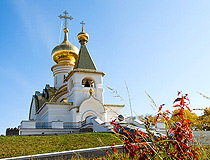
Church of St. Seraphim of Sarov in Khabarovsk
Author: Sergey V. Makogonov
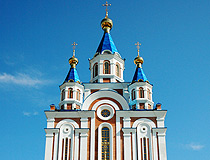
Assumption Cathedral in Khabarovsk
Author: Jason Rogers
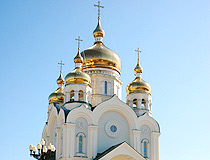
Transfiguration Cathedral in Khabarovsk
Lenin monument in Khabarovsk
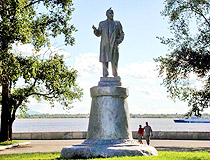
Lenin Monument in Khabarovsk
Author: Kudinov D.M.
The questions of our visitors
The comments of our visitors.
I lived in Khabarovsk for many years. I was an American working there. I spoke fluent Russian and pretty much blended right in. No one guessed I was a foreigner. I made lots of truly wonderful friends some of whom became like family.
I walked about any time I felt like it and never had any sort of problems. I lived in several other cities, including Moscow and St. Petersburg and Khabarovsk is my favorite. If I could figure out a way to live there permanently, I would with pleasure.
I had the pleasure of flying a number of flights to Khabarovsk in the early 1990's. I met some wonderful people, one very special person. While the city was in a semi state of disrepair, it still held the historic beauty of its earlier years.
It has been over 20 years since my visit and I would very much like to return. Perhaps not in this life time but the memories live on.
- Currently 2.86/5
Rating: 2.9 /5 (217 votes cast)

IMAGES
VIDEO
COMMENTS
On the lighter side there's sumptuous nature outside Niš at river gorges, the Suva Planina mountain and the city's hot springs. Let's explore the best things to do in Niš: 1. Niš Fortress Source: Nenad Nedomacki / shutterstock Niš Fortress. Right on the Nišava River is the daunting Ottoman fort that was completed in 1723.
Nitravel - Turisticka agencija Niš. Letovanje, Putovanja. Grcka 2024, Turska, Bugarska, Albanija, apartmani, hoteli, last minute ponude. Telefon: +381 18 511002
Photo by Milica Spasojevic on Unsplash 1. Admire the beauty of Tinkers Alley. If you have one day in Niš, I recommend starting your travel adventure with a visit to the city's last surviving craftsman's quarter.. A quaint little alley packed with coppersmiths and other metal workers, Tinkers Alley dates back to the first half of the 18th century.
Trg Republike 6, 18000 Niš. Pon-Pet: 09:00 - 20:00 Subota: 09:00 - 15:00 Nedeljom ne radimo. Kontakt. [email protected]. 018 / 328 00 88. 018 / 305 435. 018 / 527 504. 066 / 00 555 6. ... Sajt Turističke agencije CLOCK TRAVEL je informativnog karaktera. Iako nastojimo da ga redovno ažuriramo, postoji mogućnost različitih informacija ...
Niš. Serbia, Europe. Serbia's third-largest metropolis is a lively city of curious contrasts, where Roma in horse-drawn carriages trot alongside new cars, and posh cocktails are sipped in antiquated alleyways. It's a buzzy kind of place, with a high number of university students, packed-out laneway bars, a happening live-music scene, and pop ...
from $109 per adult. Private Day Trip from Belgrade: Nis Sightseeing Tour & Devil's Town. 4. from $278 per adult. Likely To Sell Out. Southern Serbia: Full Day Private Trip to Niš from Belgrade. 10. from $235 per adult. Niš Private Custom Tour by Bike.
Niš, or Naissus, as the town was known in Roman times, was the birthplace of Emperor Constantine I, and excavations at the site of Mediana have revealed many important historical finds. Visitors can tour the fourth-century villa and peristyle, as well as a thermae, a granary, and a water tower, and admire the stunning collection of floor mosaics.
Niš is an important crossroads between Central Europe and the Middle East, and assumes the central position in the Balkan peninsula, surrounded by a number of mountains, two rivers, two beautiful gorges, and numerous sites of historical importance from various periods in Niš Valley. Some approximate distances: Niš - Belgrade 240 km, Niš ...
The most famous tourist attraction in Niš didn't start life as a beacon for photographs and interested visitors. The Skull Tower was every bit as grim as the name suggests, and was constructed to warn the local Serbs against another rebellion. The tower was built in 1809 using the skulls of 952 fallen Serbian rebels, but less than 100 of the heads remain today.
The City. One of the oldest cities in Europe, Niš is a history lovers paradise - every corner of the city showing traces of bygone eras. The friendly, welcoming locals will delight in sharing their knowledge of the city with you.Previously named Naissus - the nymph's city - by the Celts, it's strategically important location at the ...
Buses are a popular and efficient way to travel within the Balkans, and Niš is well-connected by international and domestic bus routes. Direct buses run from many Balkan cities, including Belgrade, Skopje, Sofia, and others. The central bus station in Niš is located near the city center, making it convenient for travelers. By Train
How to Reach Nis? By Air. The fastest option for Nis travel is the Constantine the Great Airport. You can get direct flights from Belgrade, Cologne, Hahn, Istanbul, Milan, Zurich, Munich, Berlin, Malmo, Bratislava, Dusseldorf, Ljubljana, Athens, Tivat, Antalya, Malta, Stockholm, Vienna, Dortmund and few more cities in Europe.The airport is connected to places to visit in Niš Serbia by buses ...
Niš (pronounced: 'neesh') is an important crossroad between central Europe and the middle East, and assumes the central position in the Balkan peninsula. It is situated in southeast Serbia, with the coordinates - Latitude: 43° 19' 29 N, Longitude: 21° 54' 12 E. It is located in Niš Valley and surrounded by a number of mountains, two rivers ...
Following a pickup from your hotel, travel directly to Nis in Serbia. Arrive in Nis after a 2-hour drive and explore the town known as the birthplace of the famous Roman Emperor Constantine the Great. Your first stop will be the Skull Tower, also known as Chele Tower. Marvel at the stone structure embedded with human skulls.
Niš, Serbia - When visiting the Balkans in south-eastern Europe, in particular, Serbia, you may be forgiven for only having the capital, Belgrade, on your list of destinations.Granted, there are a wealth of experiences awaiting you in what was the capital of the former Yugoslavia - a wide array of history dating back to the Ottoman Empire, impressive monuments and a huge variety of ...
Apr 21 - Apr 22. Stay at this 5-star luxury hotel in Niš. Enjoy free breakfast, free WiFi, and 2 bars/lounges. Popular attractions Square of King Milan and Nis Fortress are located ... 9.4/10 Exceptional! (101 reviews) Excellent stay. "Great location in centre of city. Clean, friendly and organised."
However, visiting Skull Tower was by far one of the most memorable moments of my time in Niš. 3. Eat Burek & Jogurt. Serbia is known for their burek, however Niš is considered the most famous in all of Serbia for this delicious, greasy, and savory pastry. "Jogurt" is a drink that is often accompanied with burek.
Nis Travel⚓️🚢 (@nis.travel) • Instagram photos and videos. 2,748 Followers, 215 Following, 248 Posts - Nis Travel⚓️🚢 (@nis.travel) on Instagram: "تور کشتی ایرانی نیسTour Agency,💵💳 Turkey,istanbul Iran 👸wedding& 👪👪oraganiztion& 🎶🎵🎸concerts Telegram&whatsapp 📱📞00905385412565".
Niš contains several main attractions, three of which can be visited with a combo ticket that only costs around 300 RSD. Simply ask about it at one of the ticket booths. The popular Niš fortress, meanwhile, is completely free to enter. Also be sure to check the very end of this Niš guide for tips on transportation and where to stay.
Things to Do in Khabarovsk, Russia: See Tripadvisor's 23,518 traveler reviews and photos of Khabarovsk tourist attractions. Find what to do today, this weekend, or in June. We have reviews of the best places to see in Khabarovsk. Visit top-rated & must-see attractions.
Khabarovsk is one of the most significant and beautiful cities of Russia's Far East. It stands on the right bank of the Amur River along the scenic Trans-Siberian railway and almost touches the Chinese border. The city of Khabarovsk played a crucial role in East - Russian history and is famous for its historic sights, monuments of architecture of different eras, religious buildings, lovely ...
285 Lower Nis Hollow Dr Unit 12. Zillow has 15 photos of this $39,000 2 beds, 1 bath, -- sqft manufactured home located at 285 Lower Nis Hollow Dr #12, Lehighton, PA 18235 built in 1976. MLS #PACC2004340.
Muravyov Amursky Park. 4.5 /5 (3 reviews) Explore the great outdoors at Muravyov Amursky Park, a lovely green space in Khabarovsk. Experience the area's theater scene and museums.
This city is located at the intersection of international railway and air transport routes on the right bank of the Amur River, near the border with China. The population of Khabarovsk is about 613,500 (2022), the area - 383 sq. km. The phone code - +7 4212, the postal codes - 680000-680150.